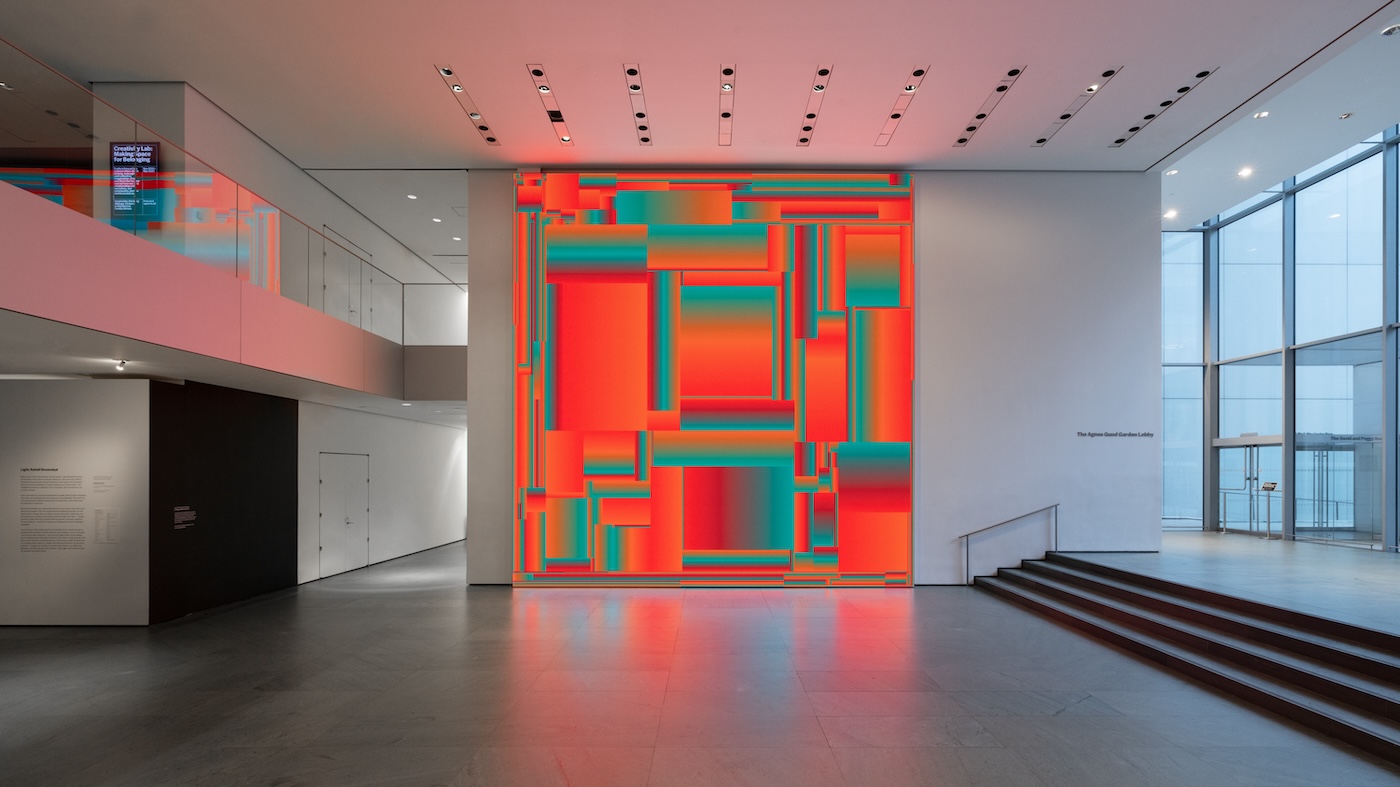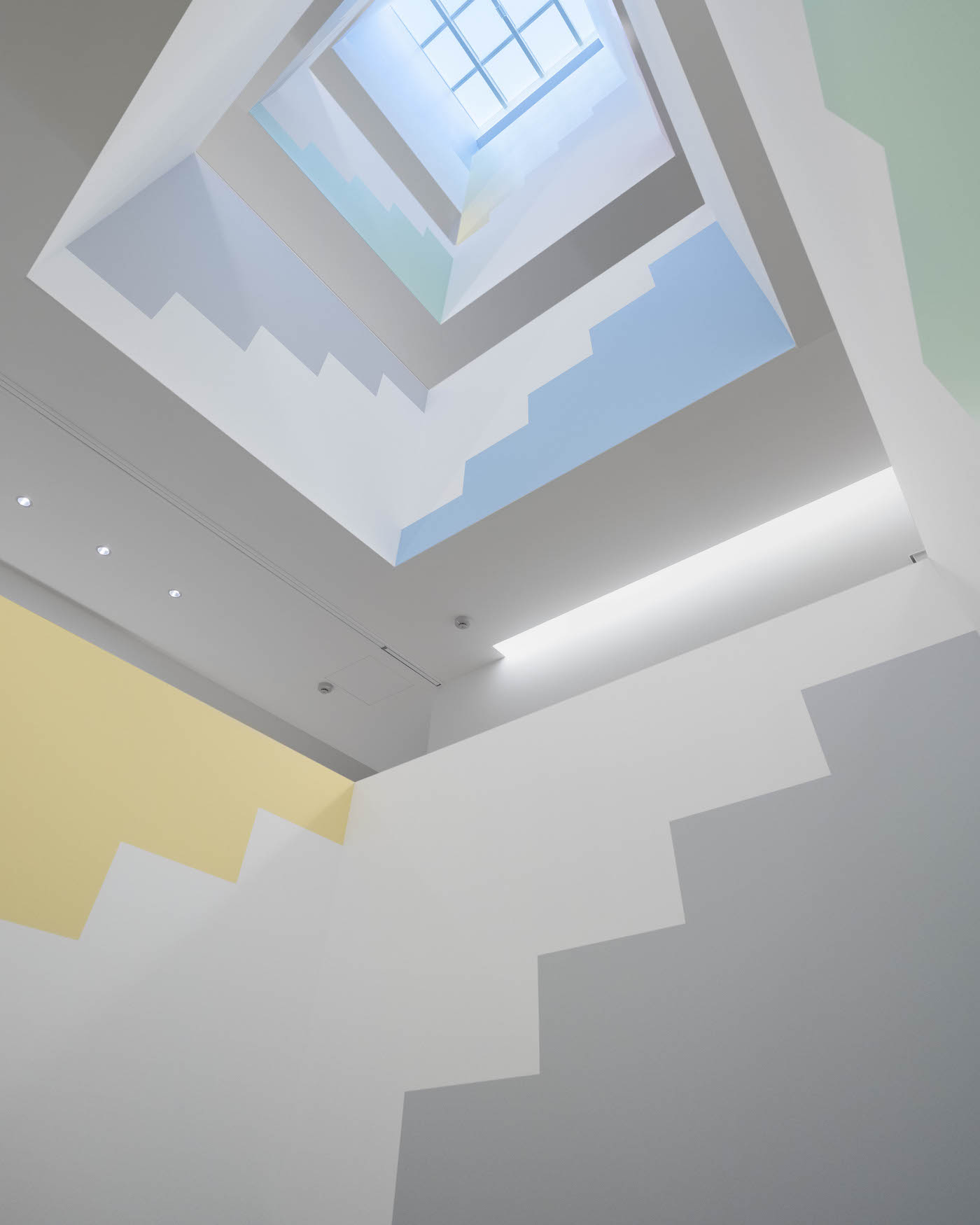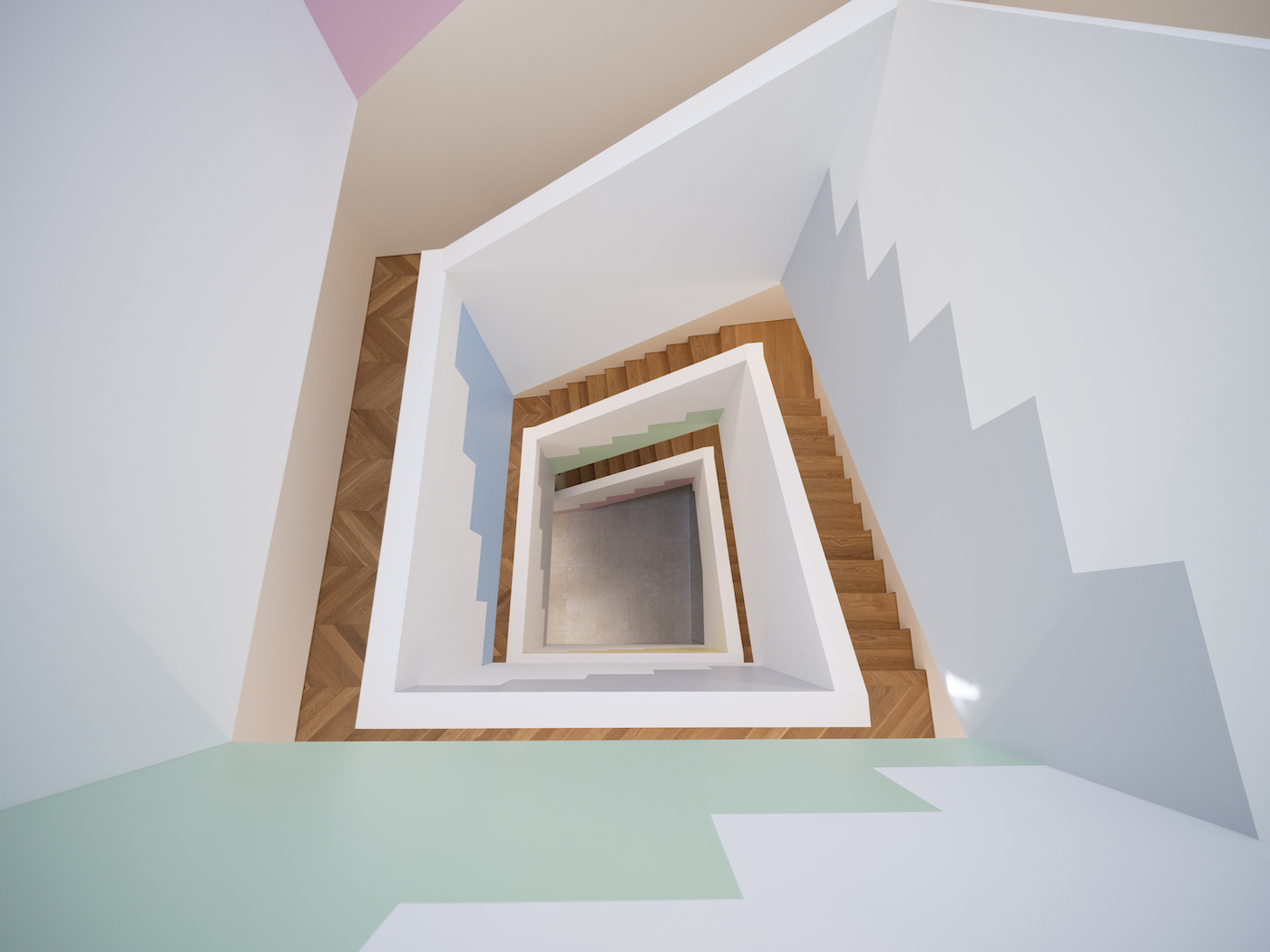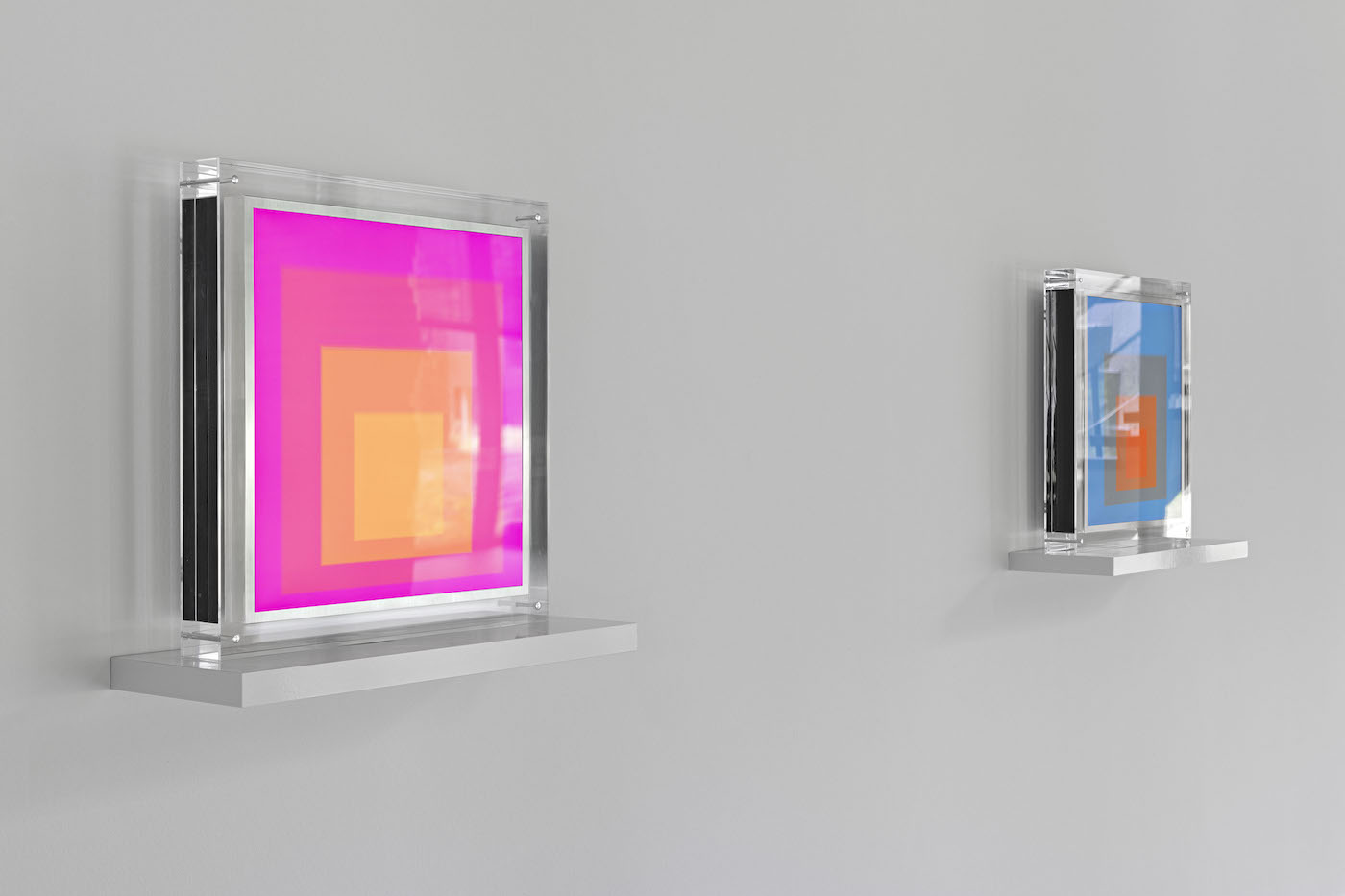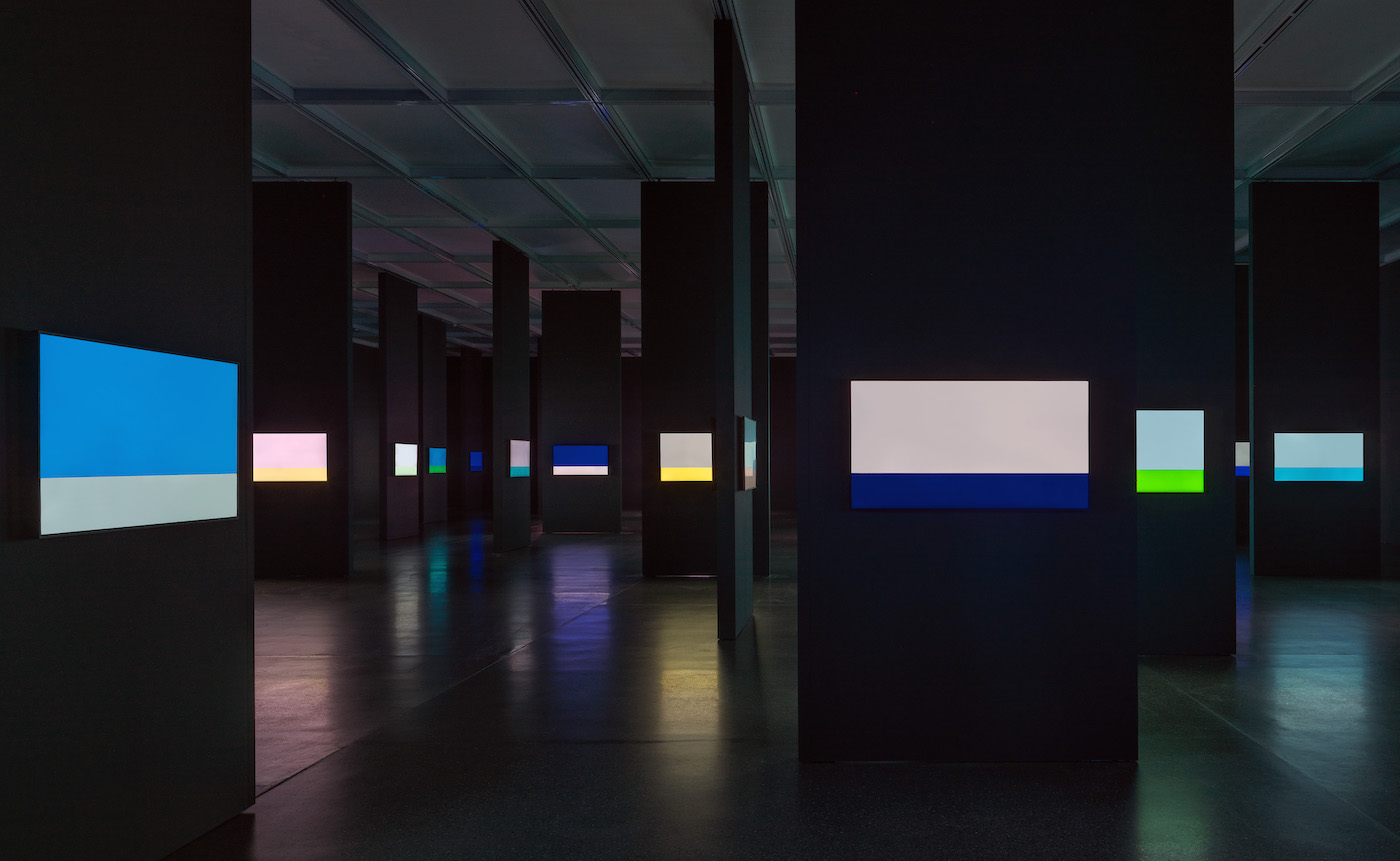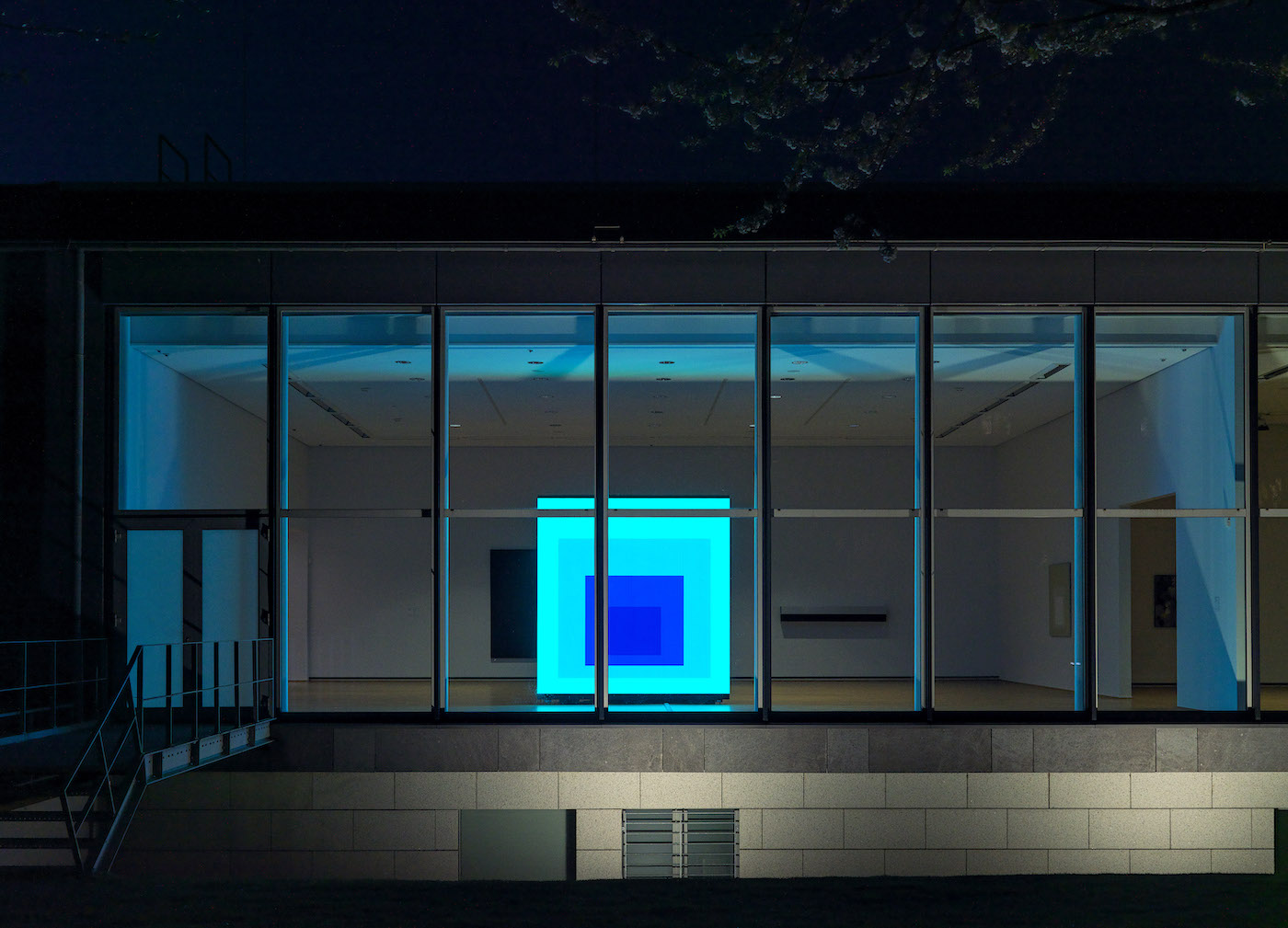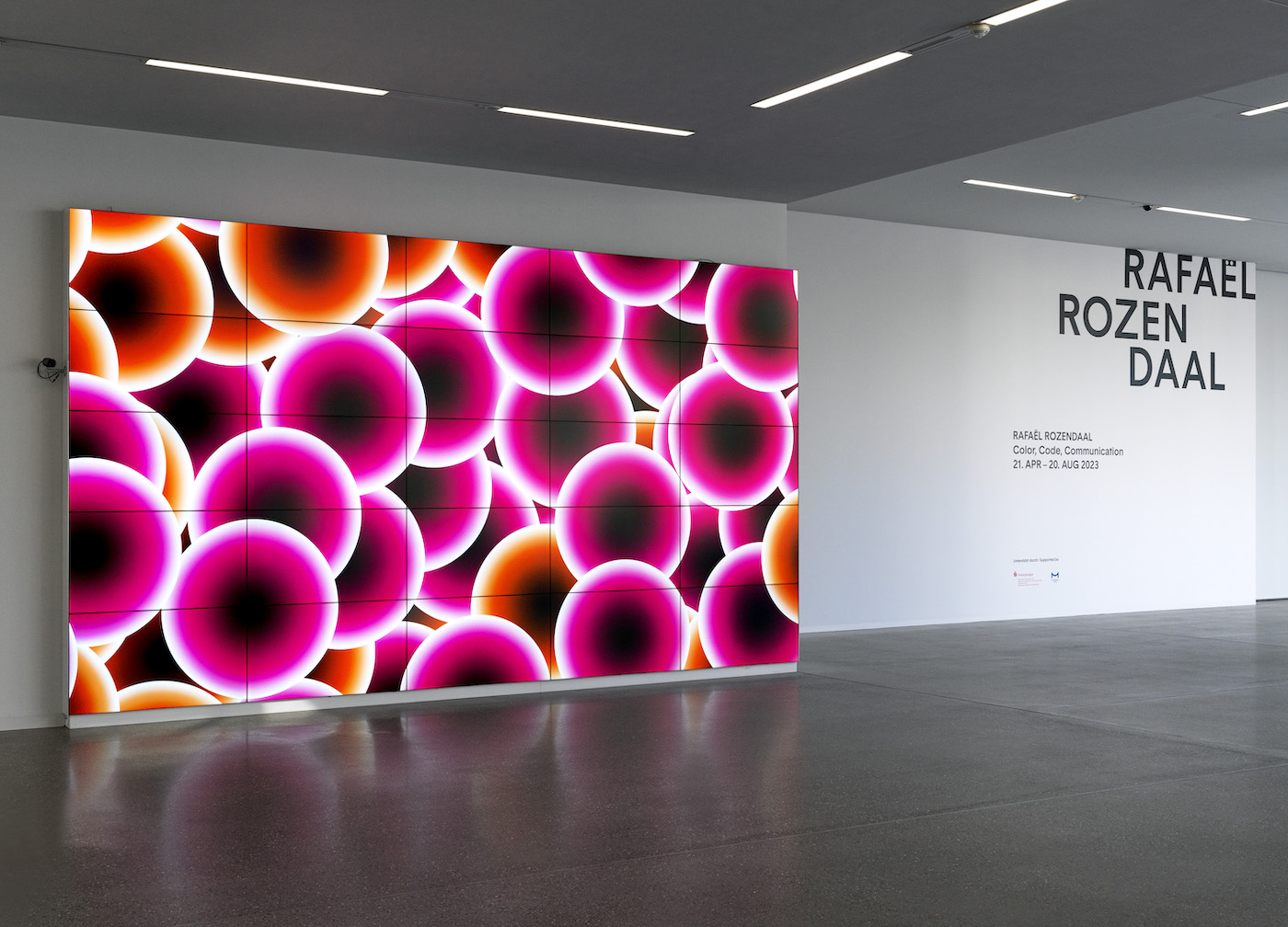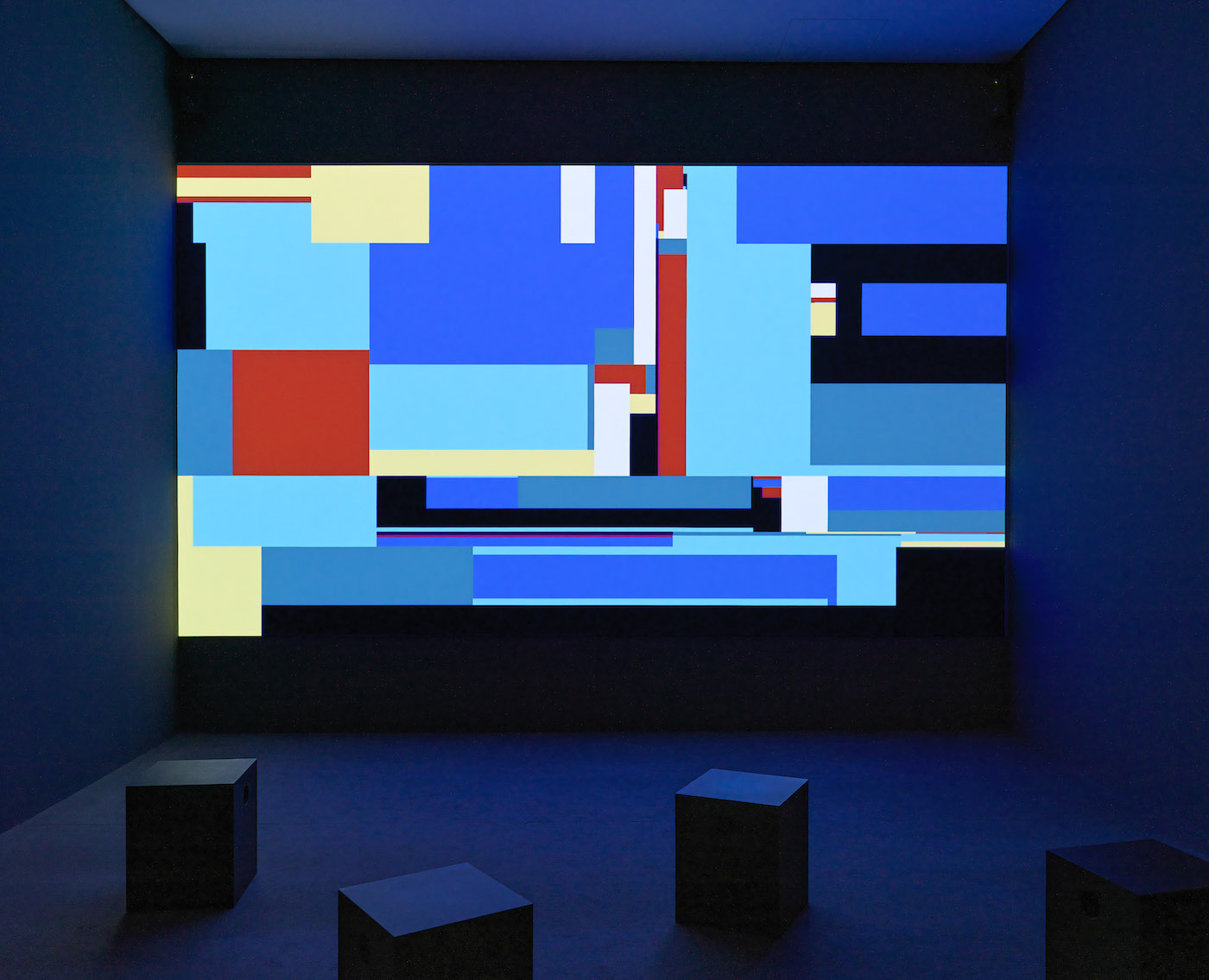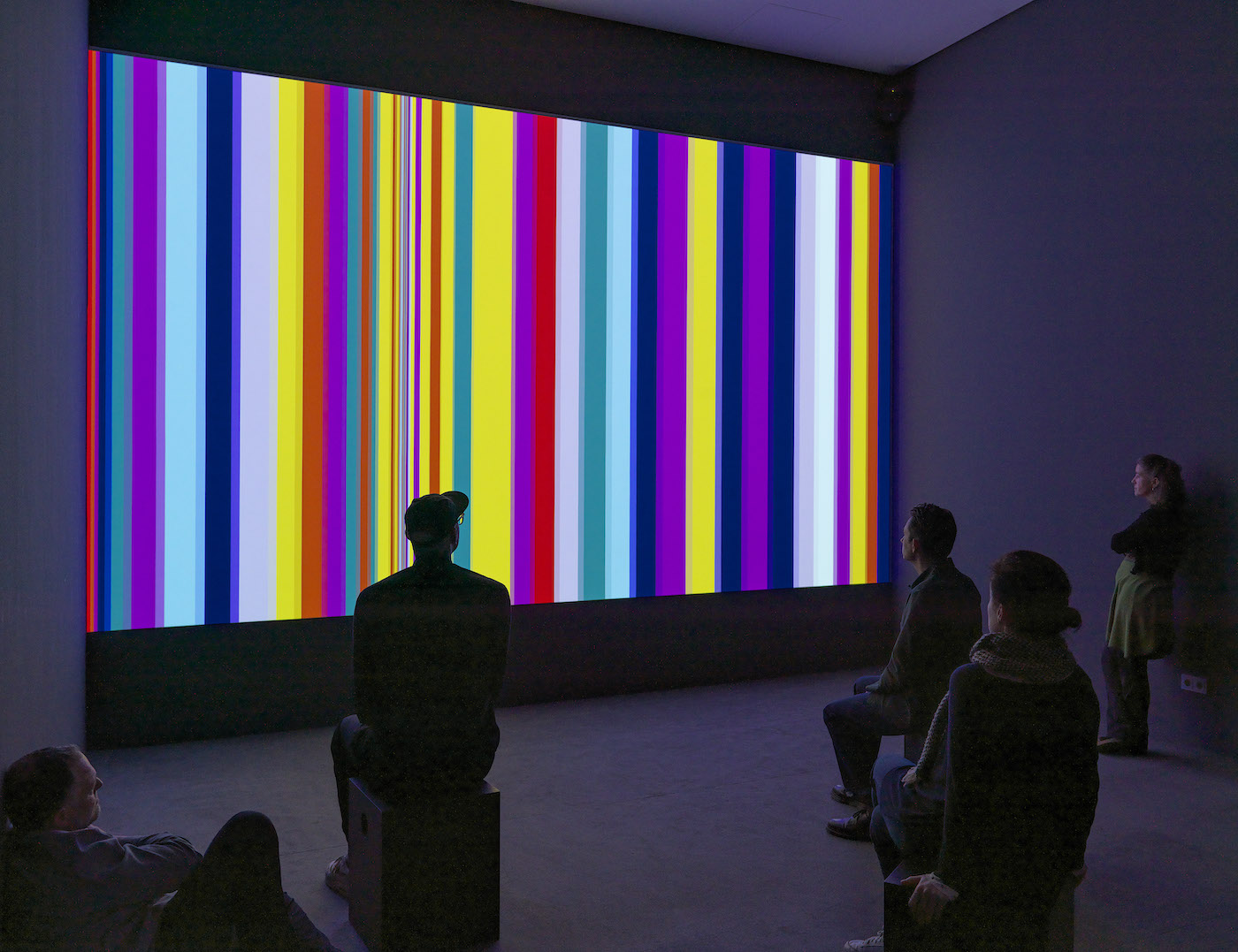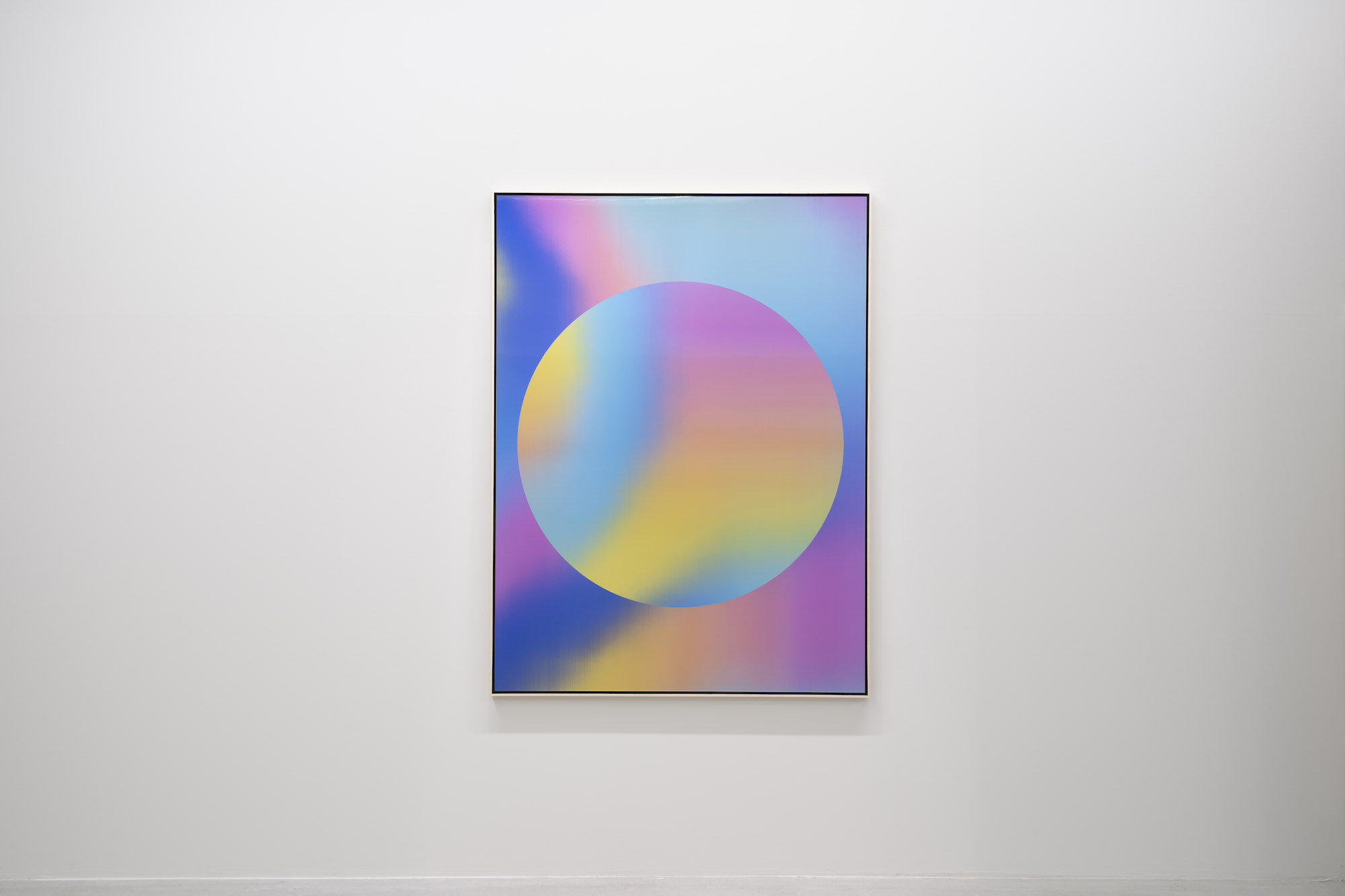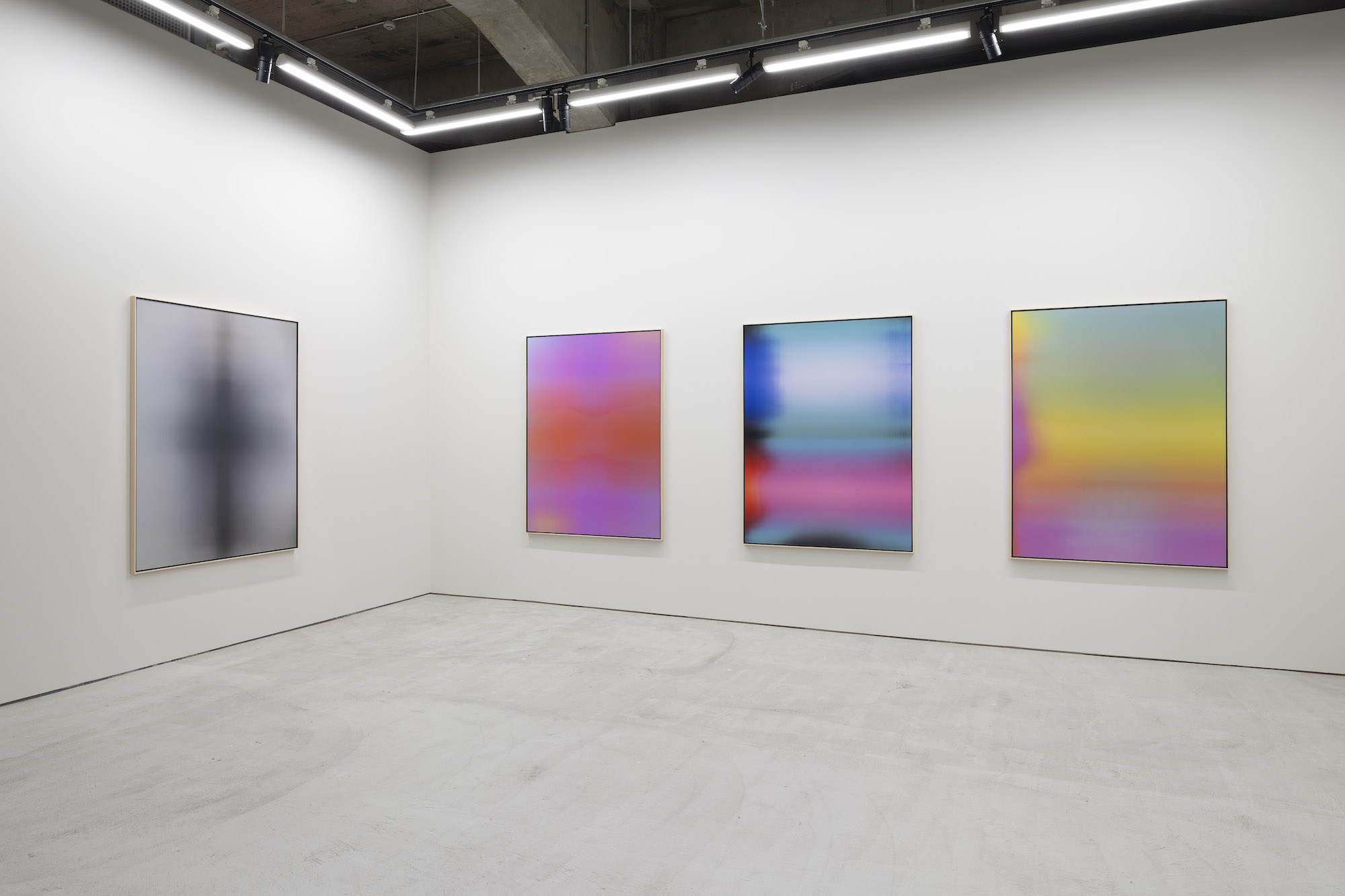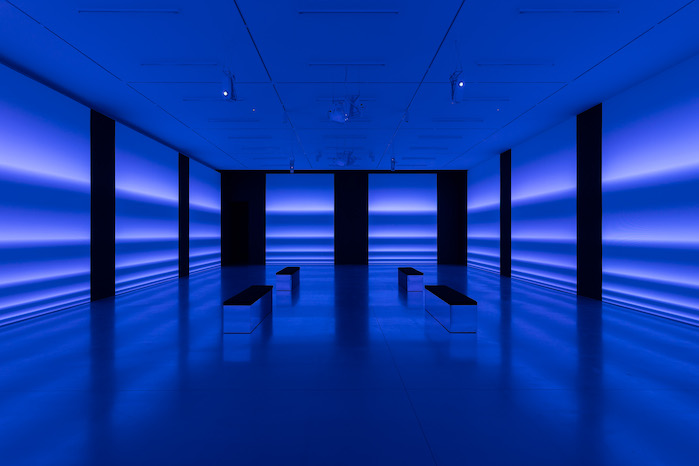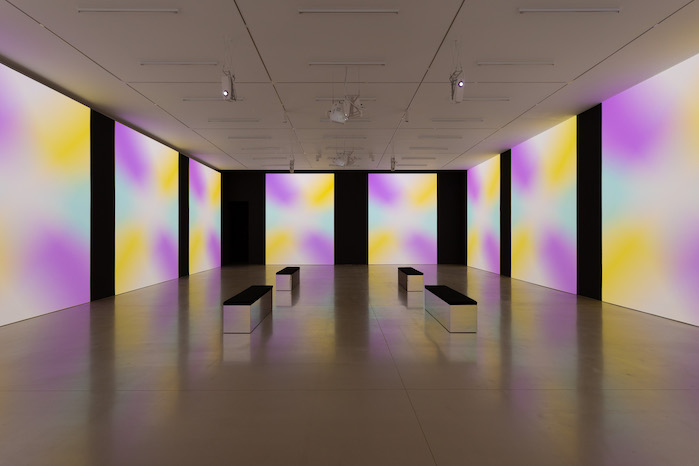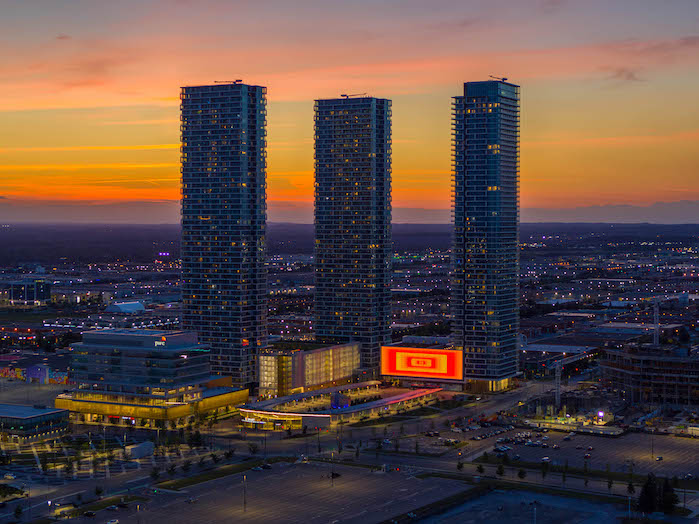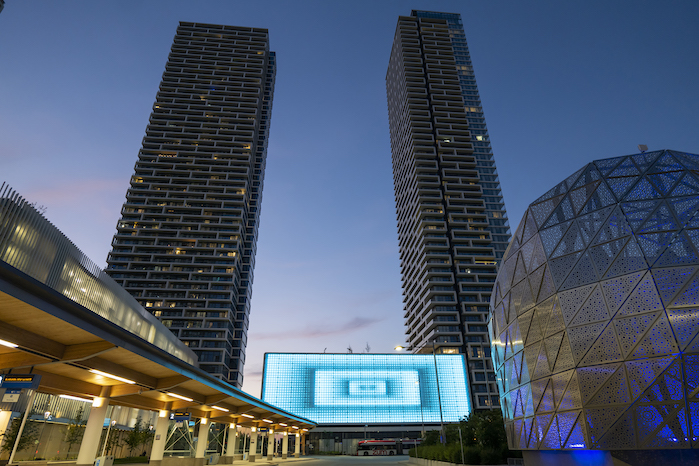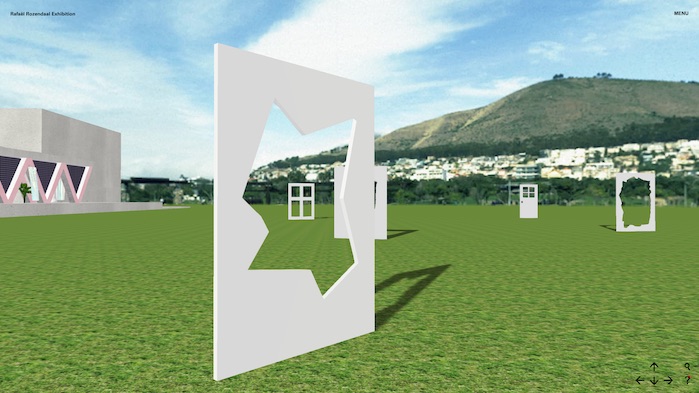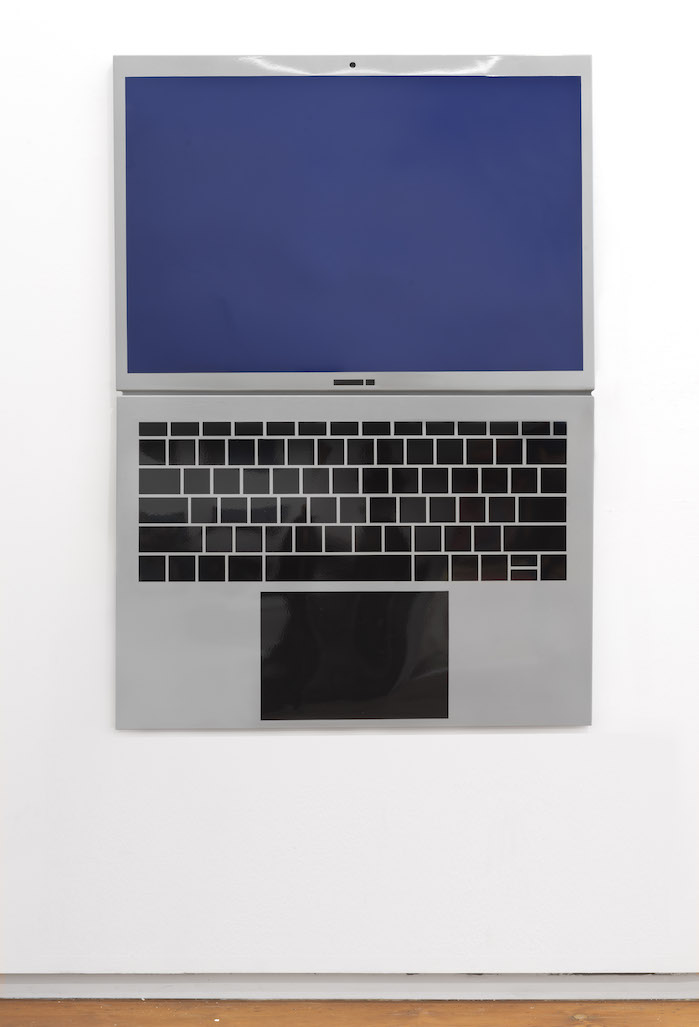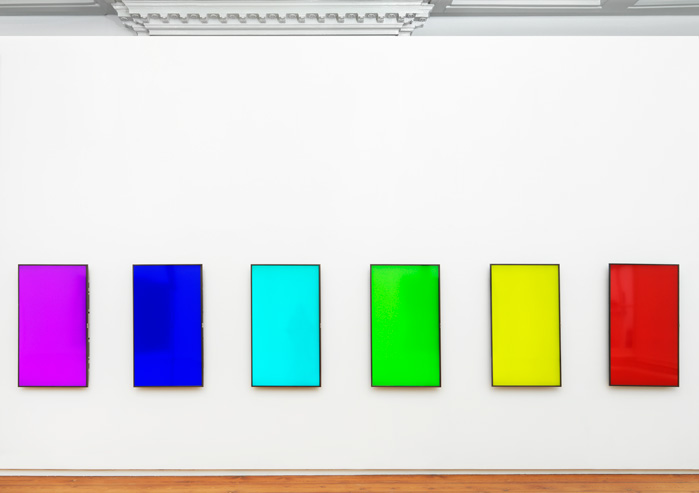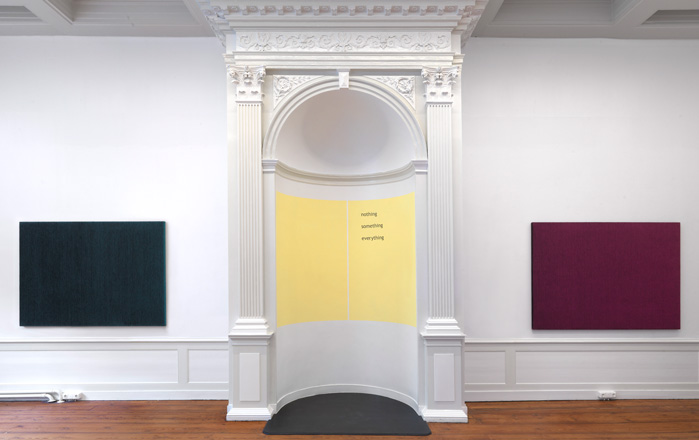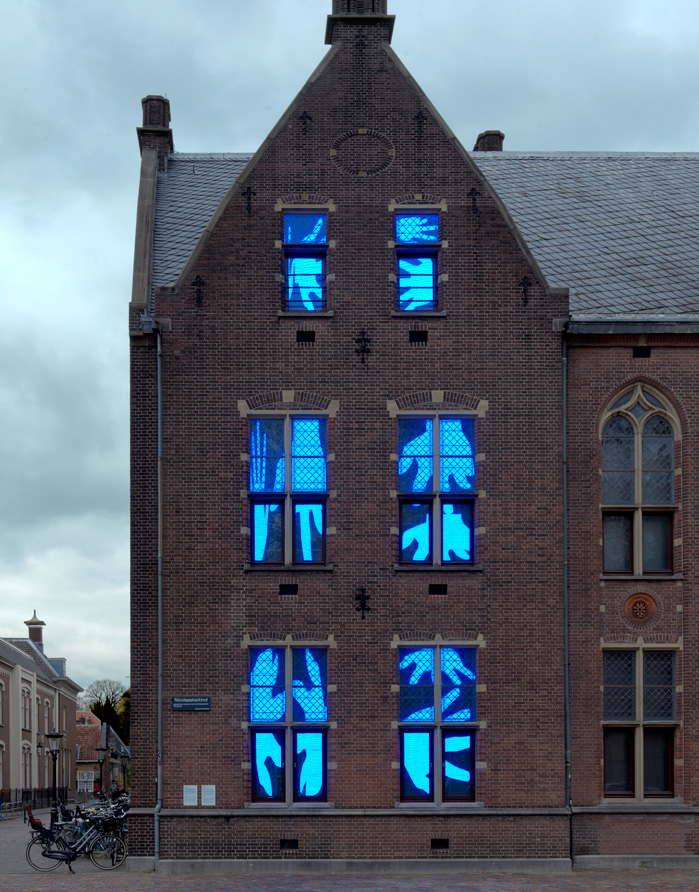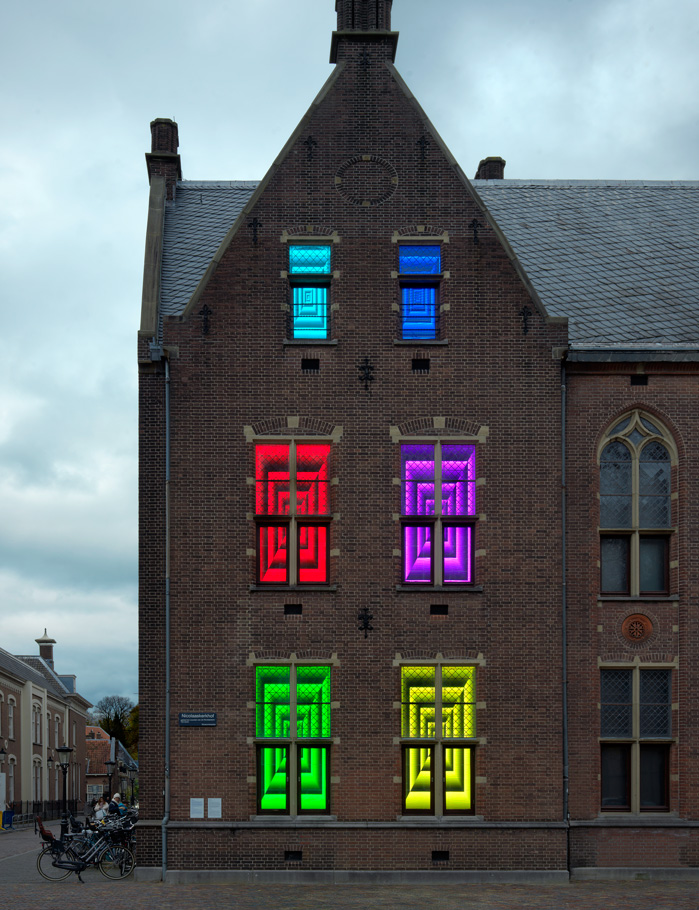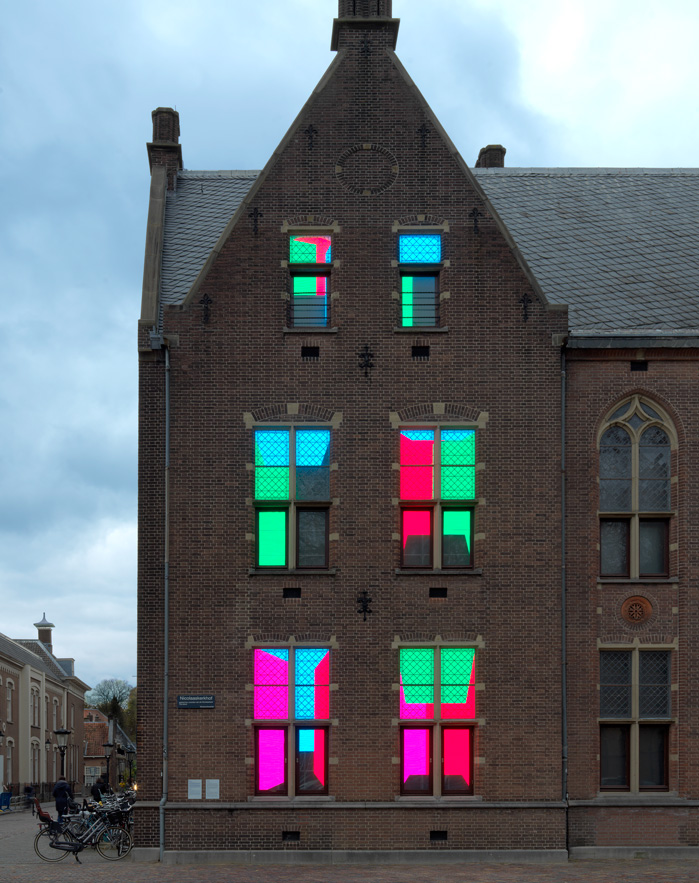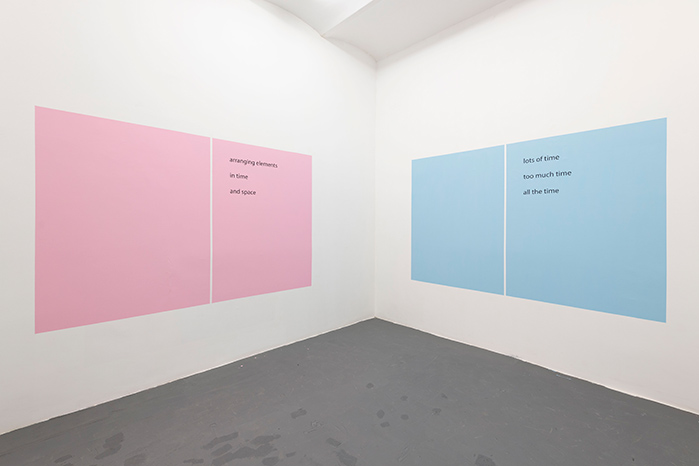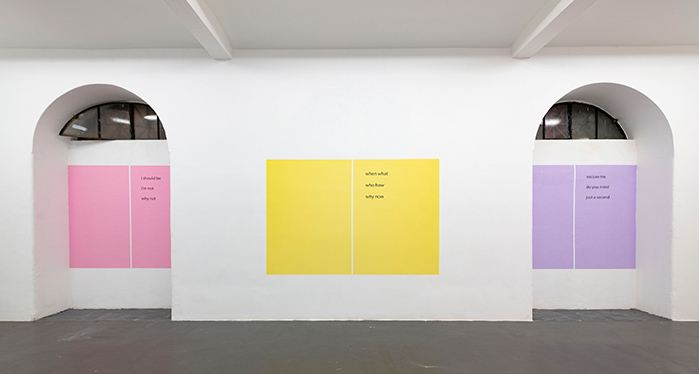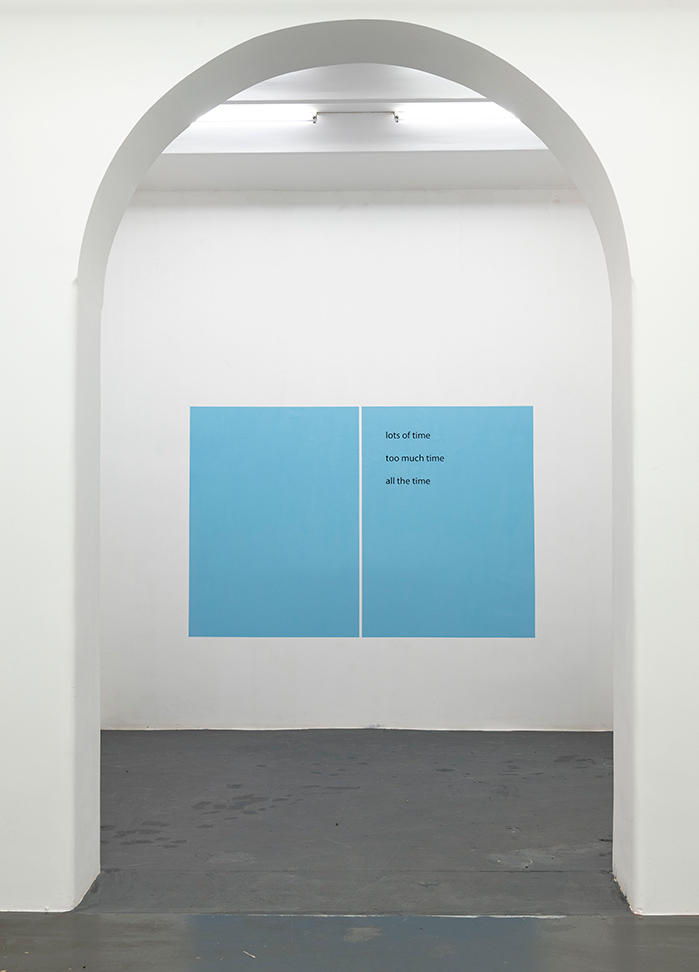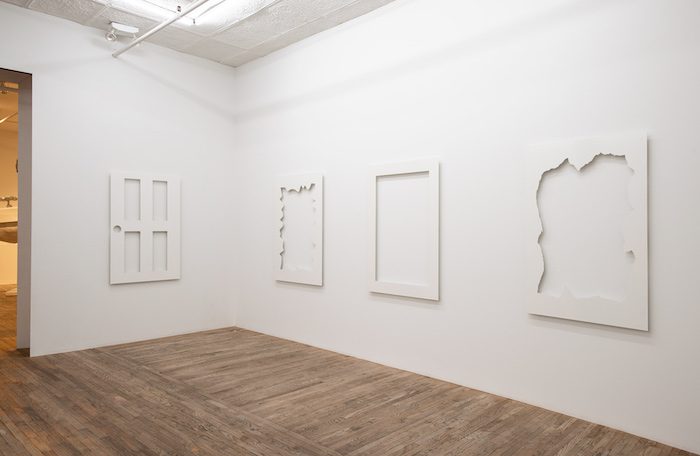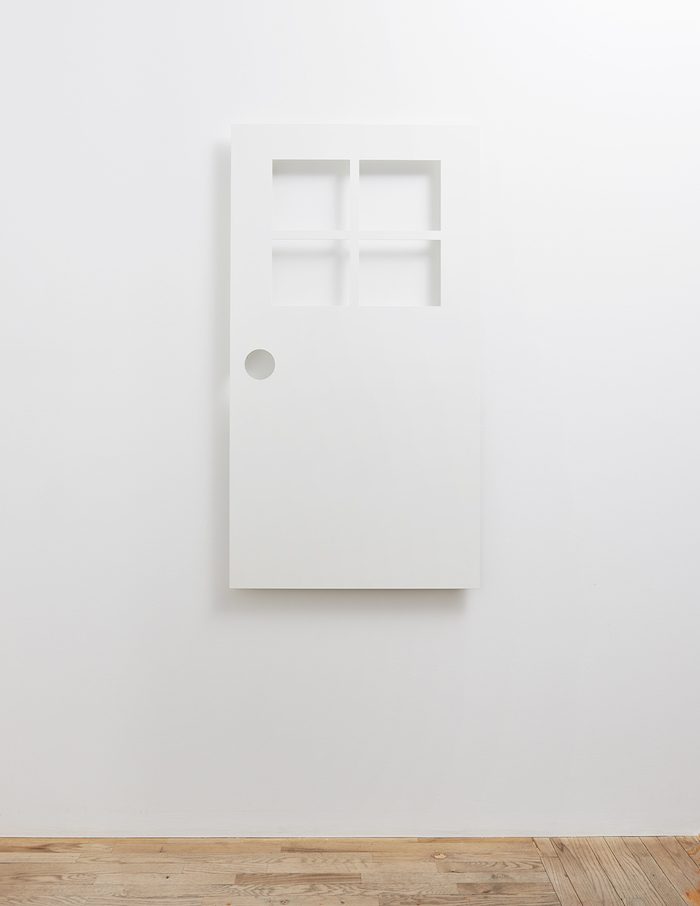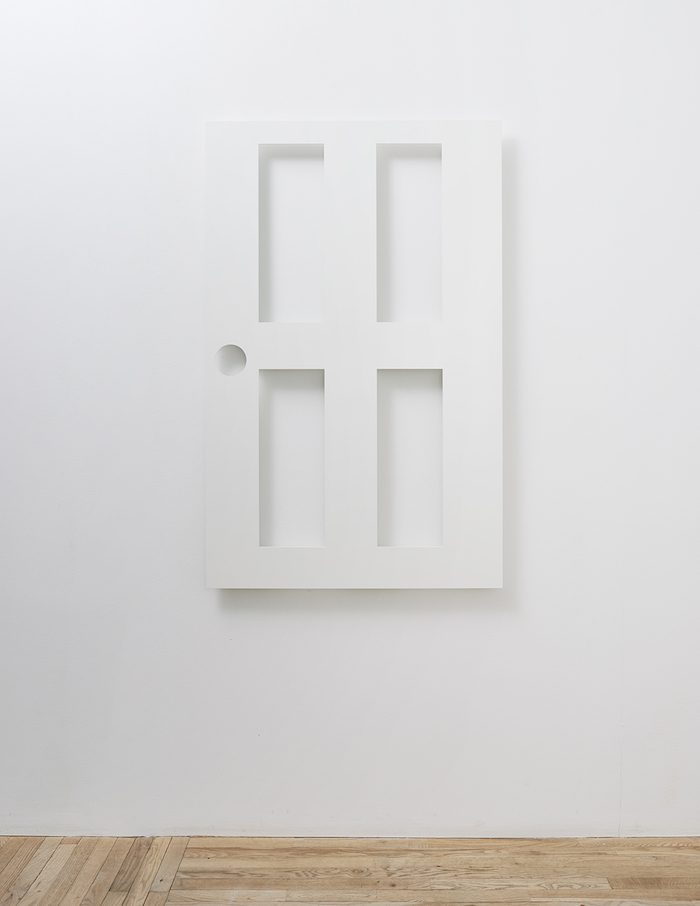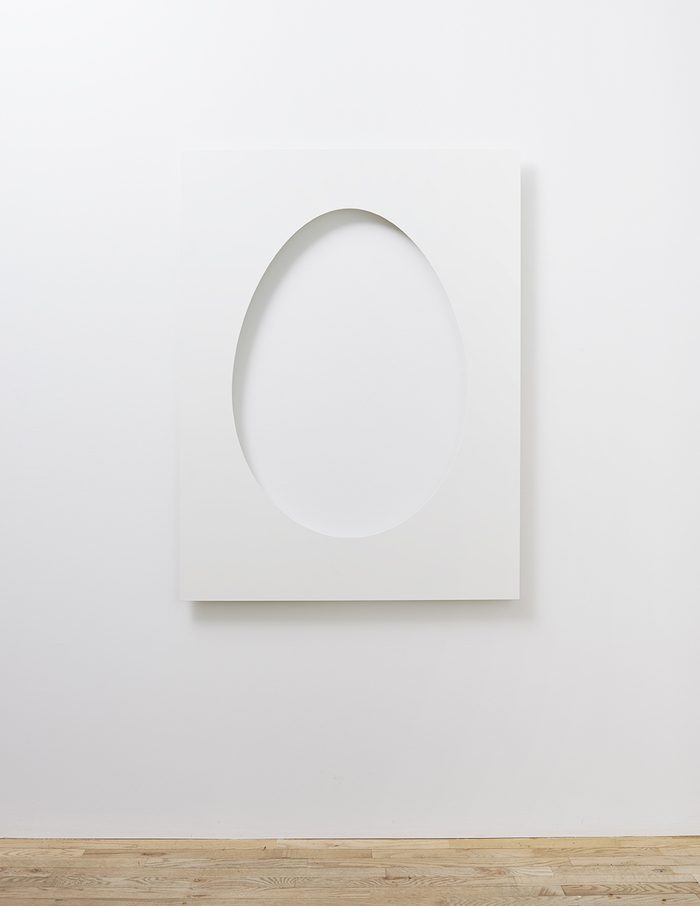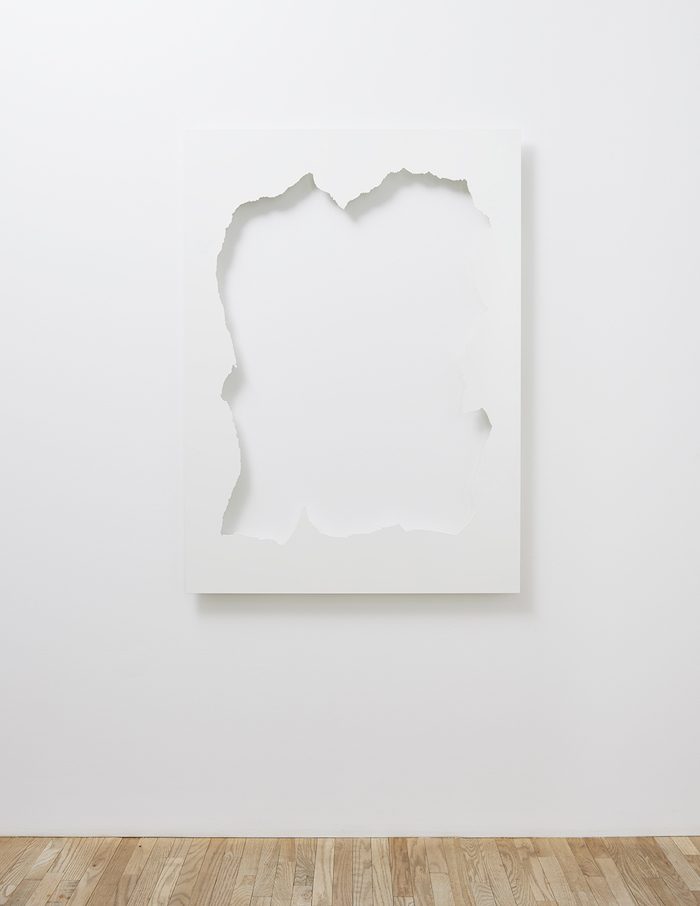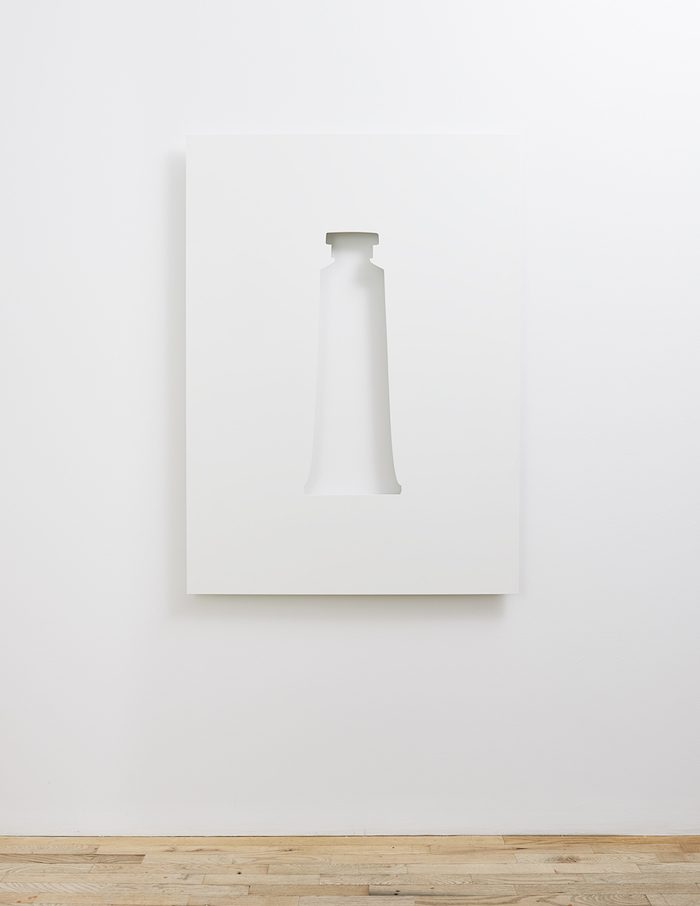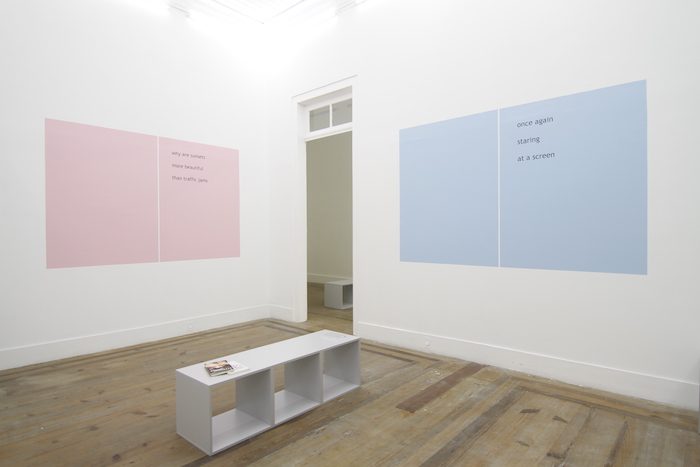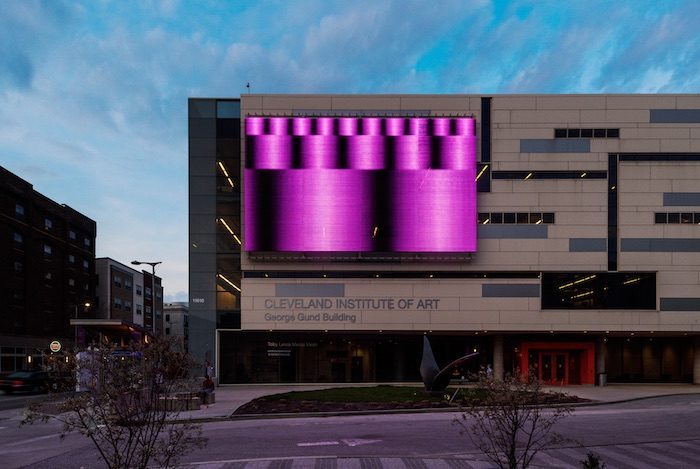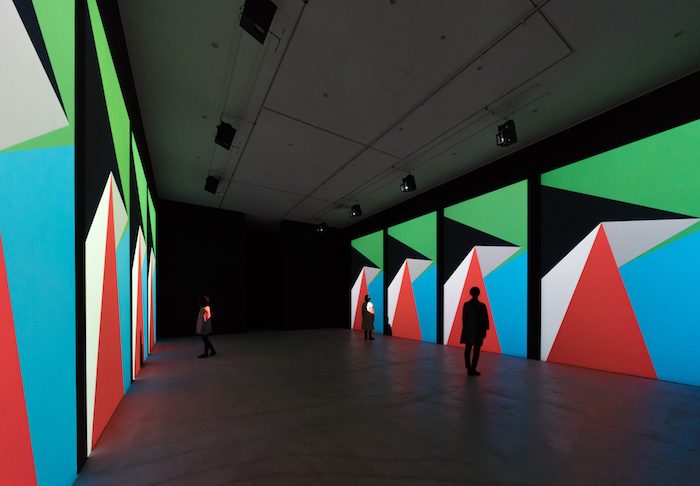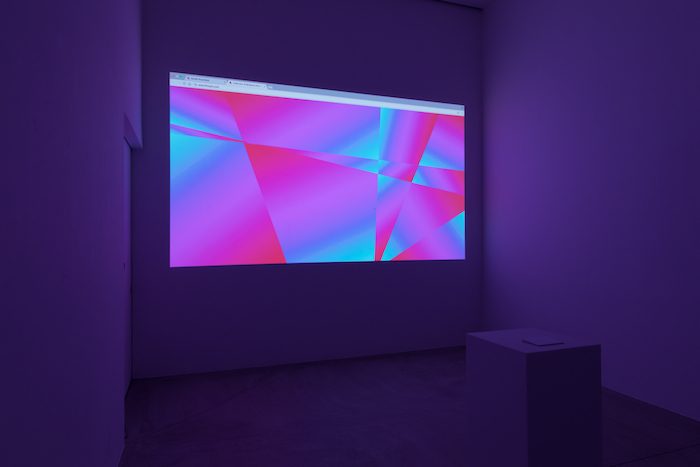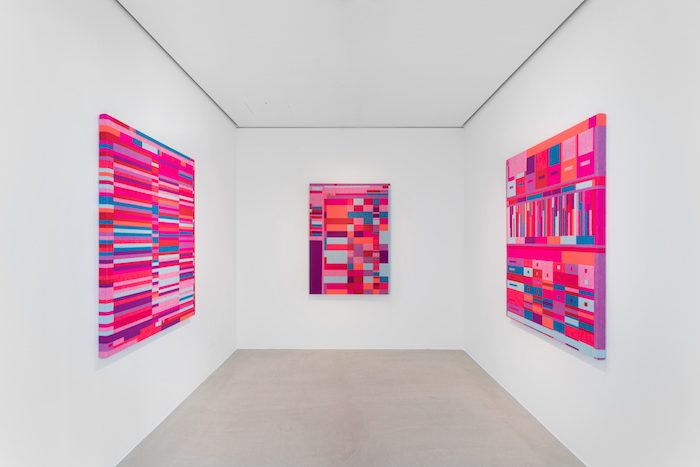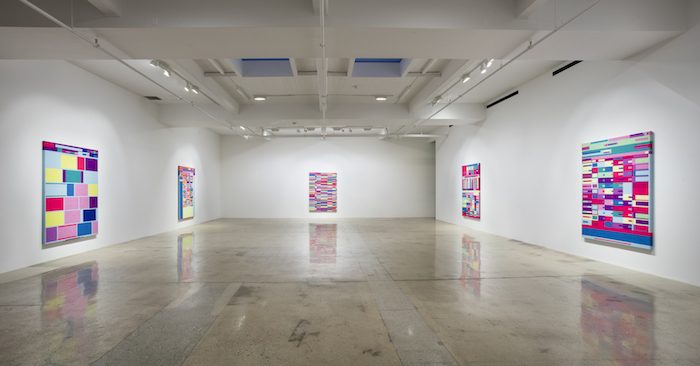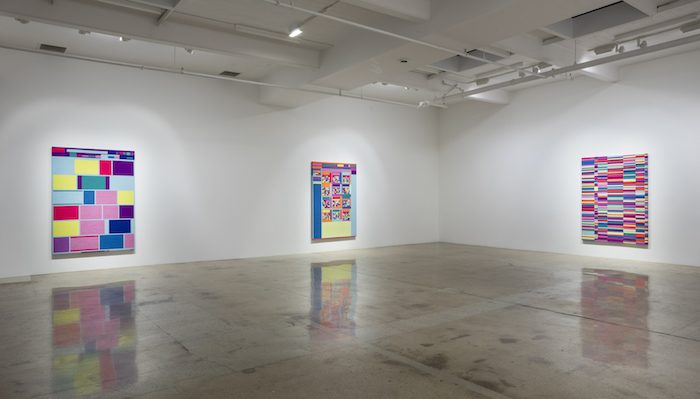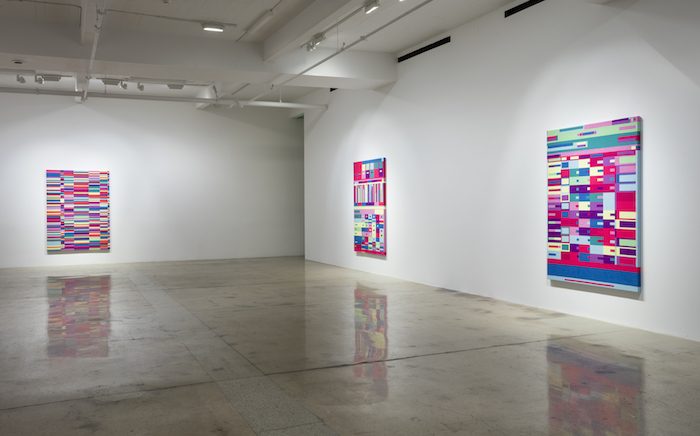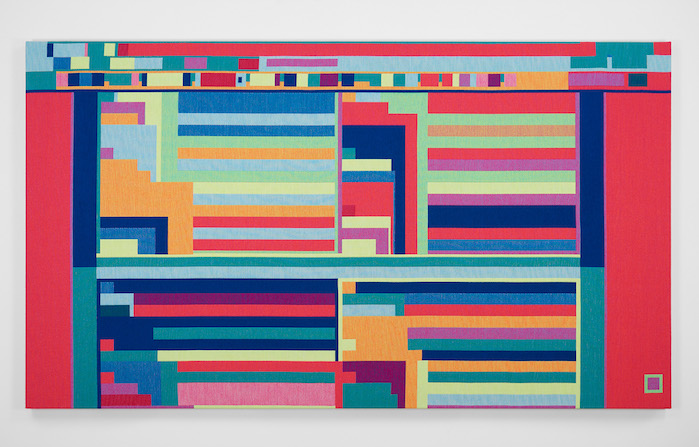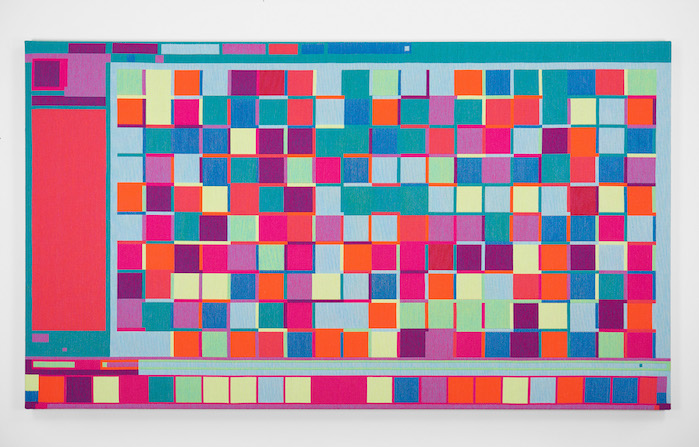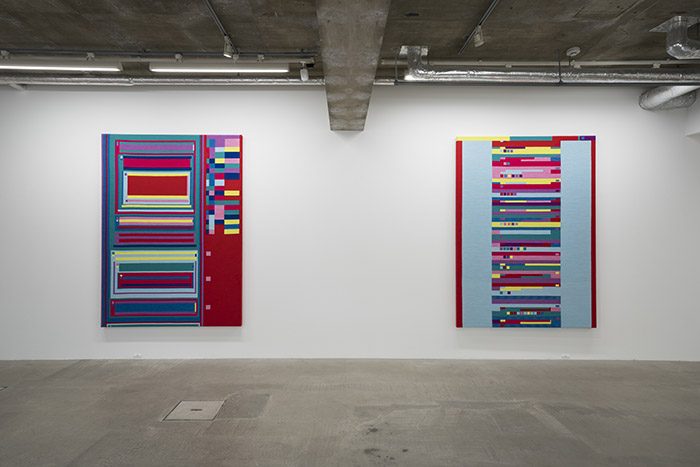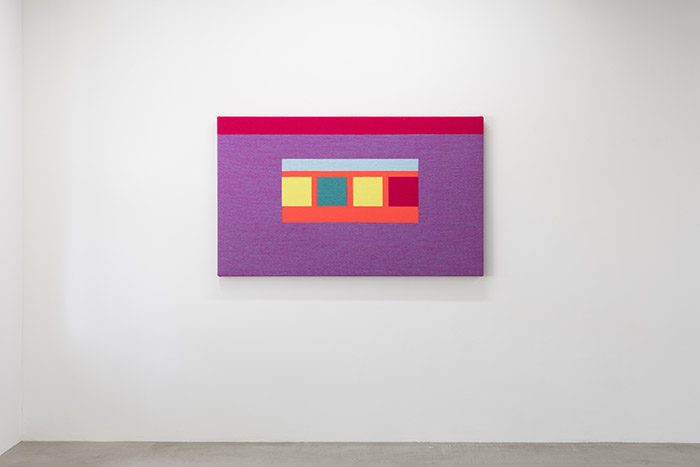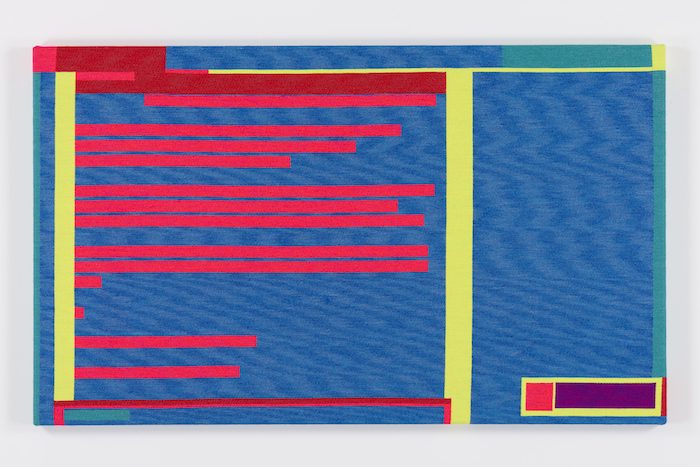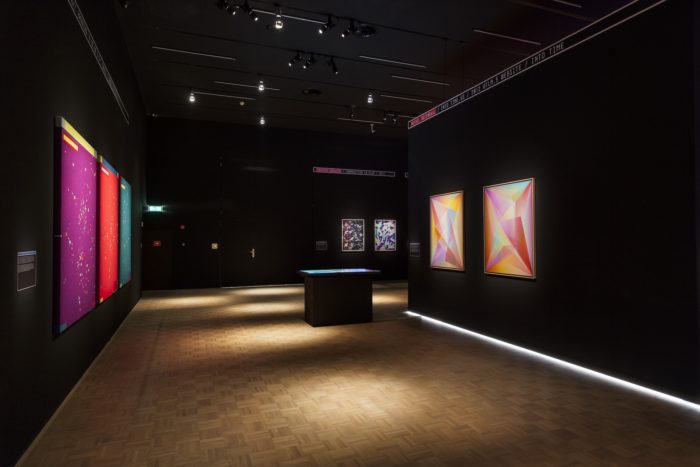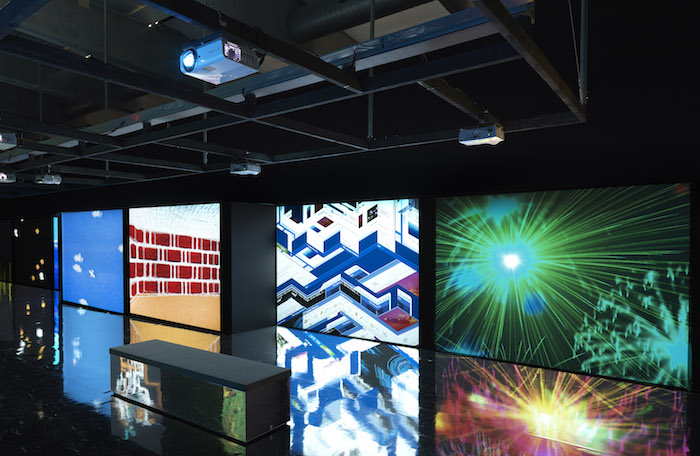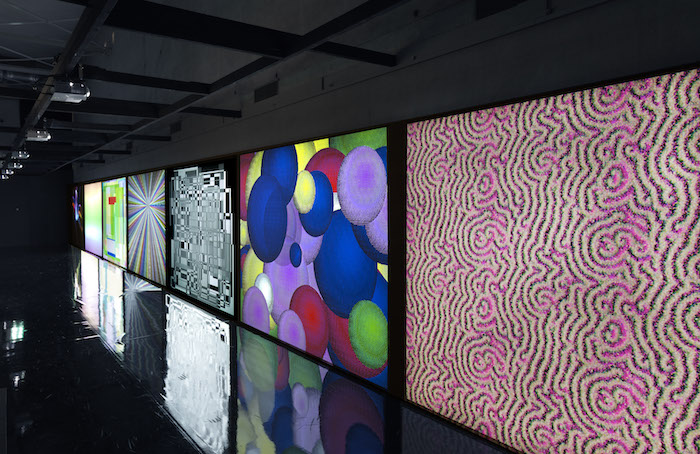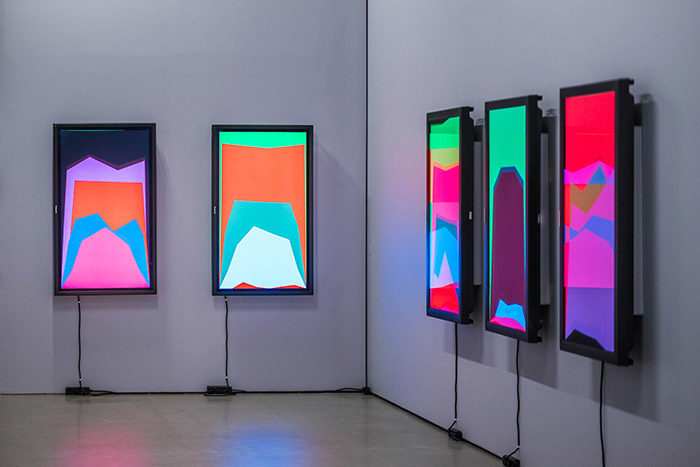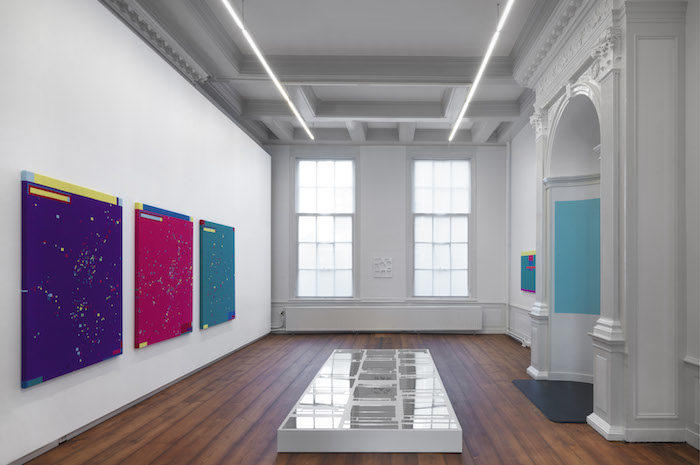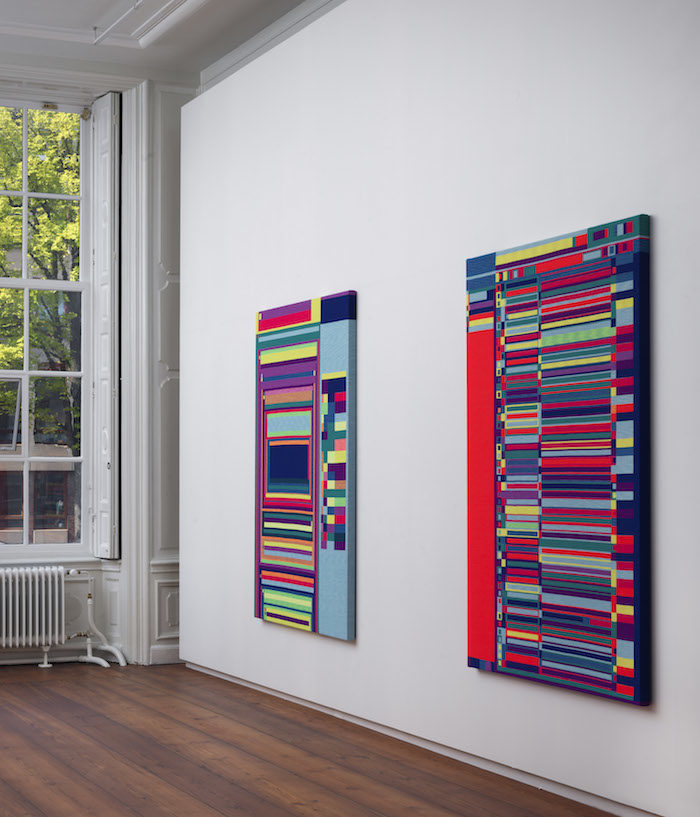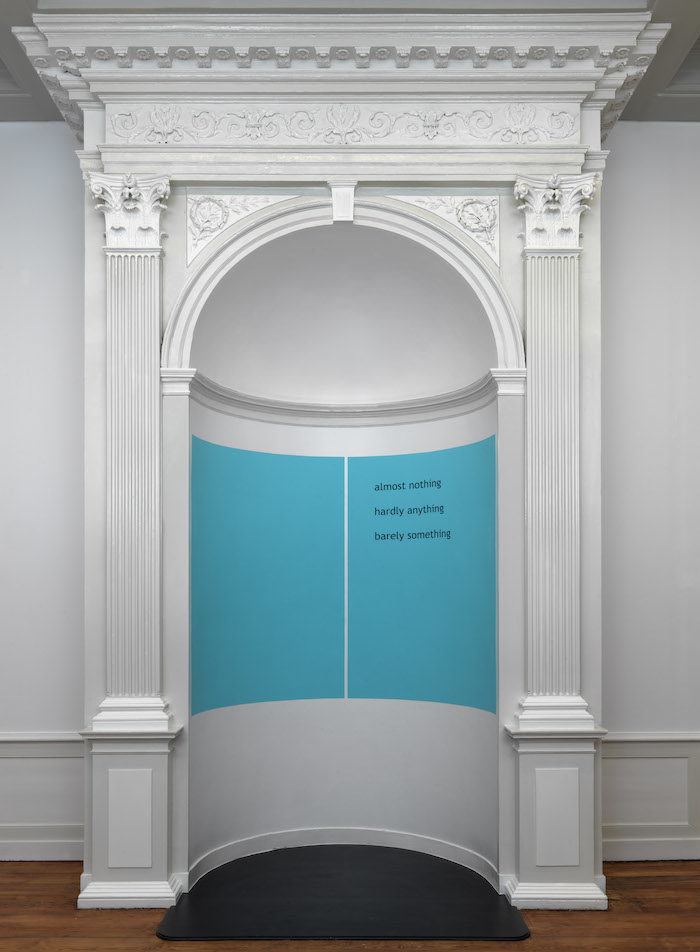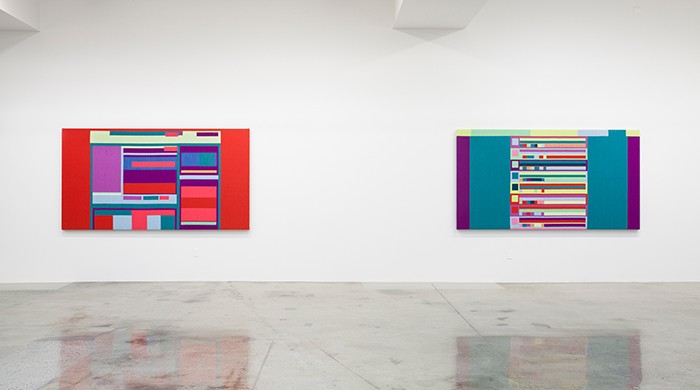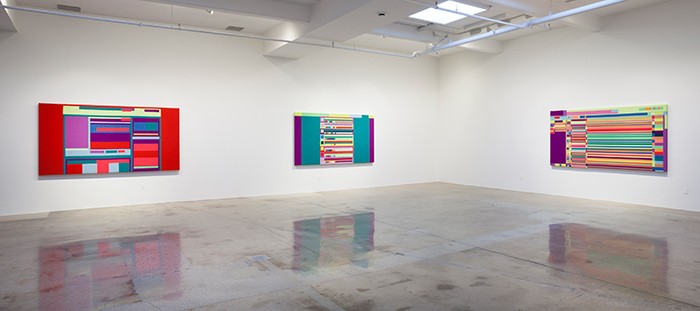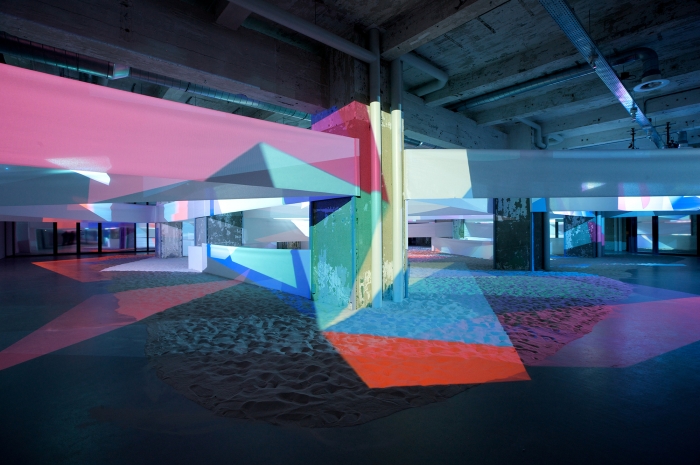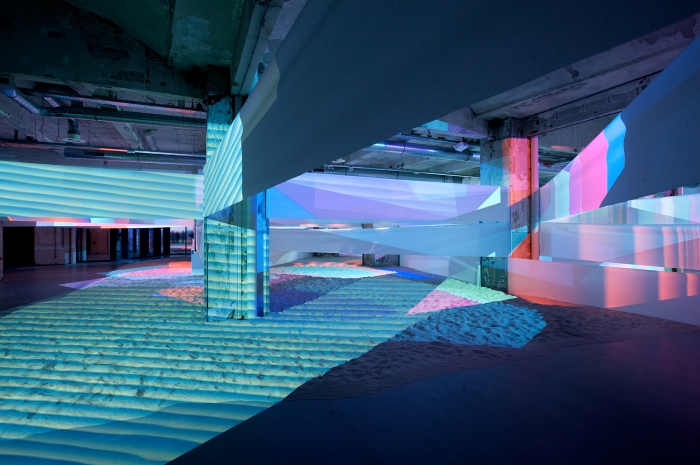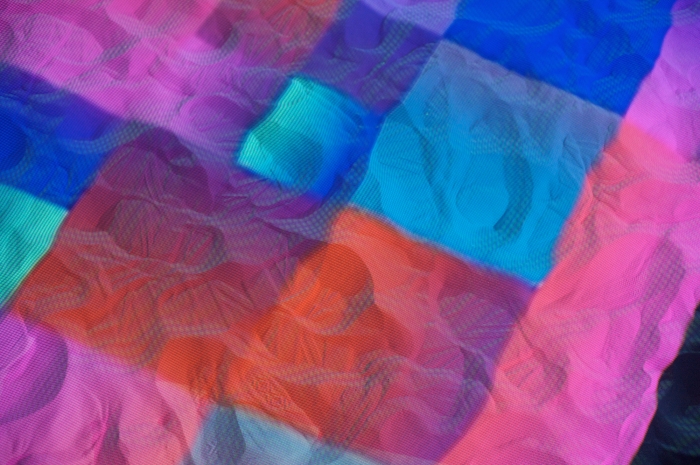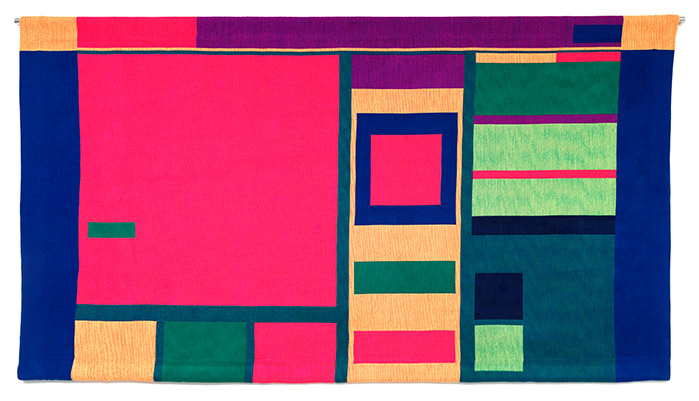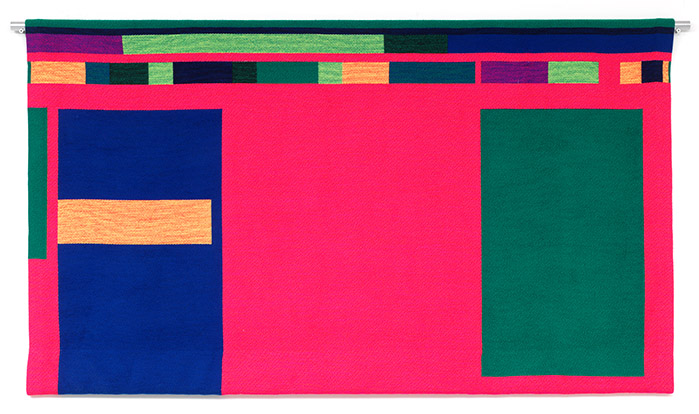




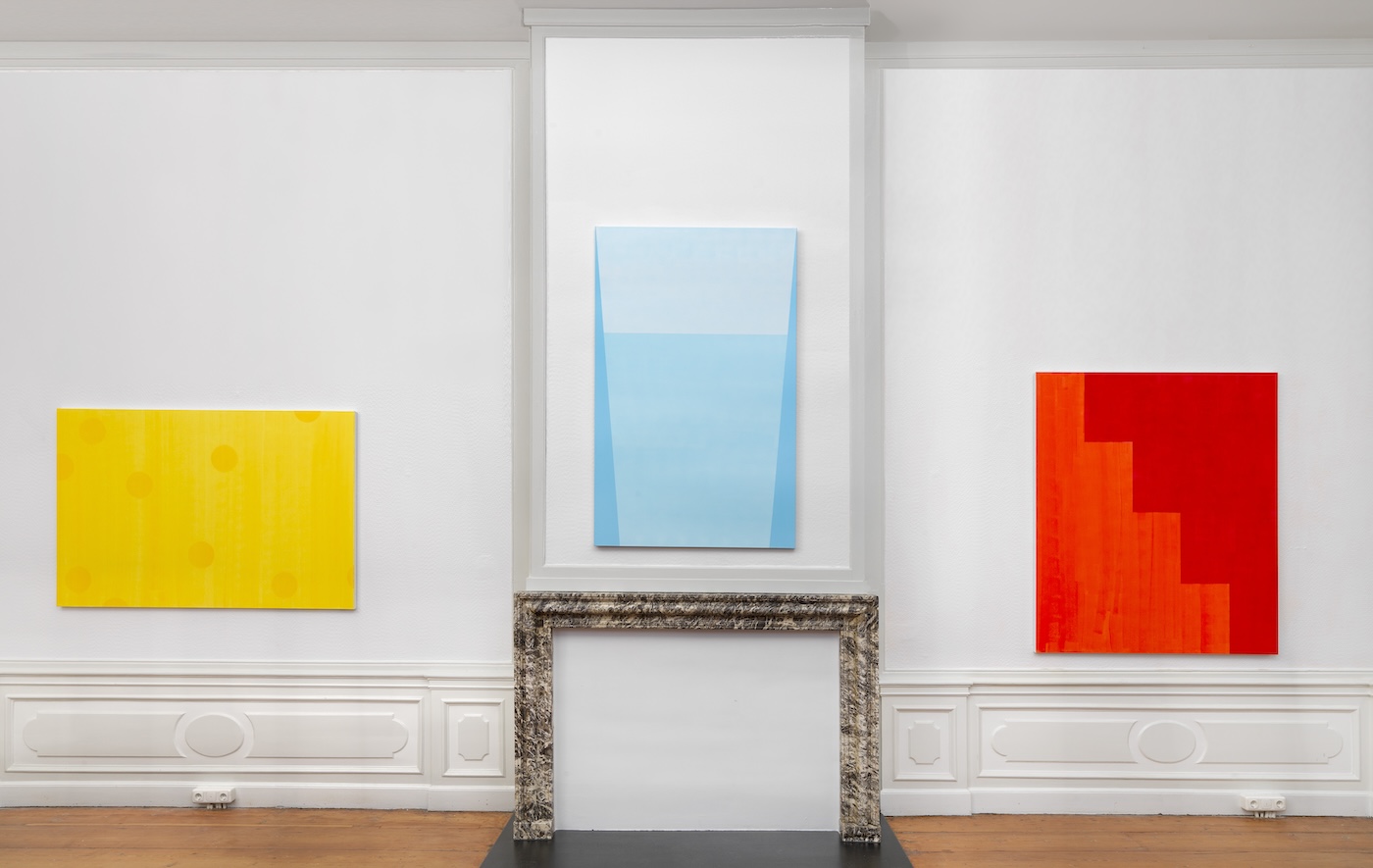







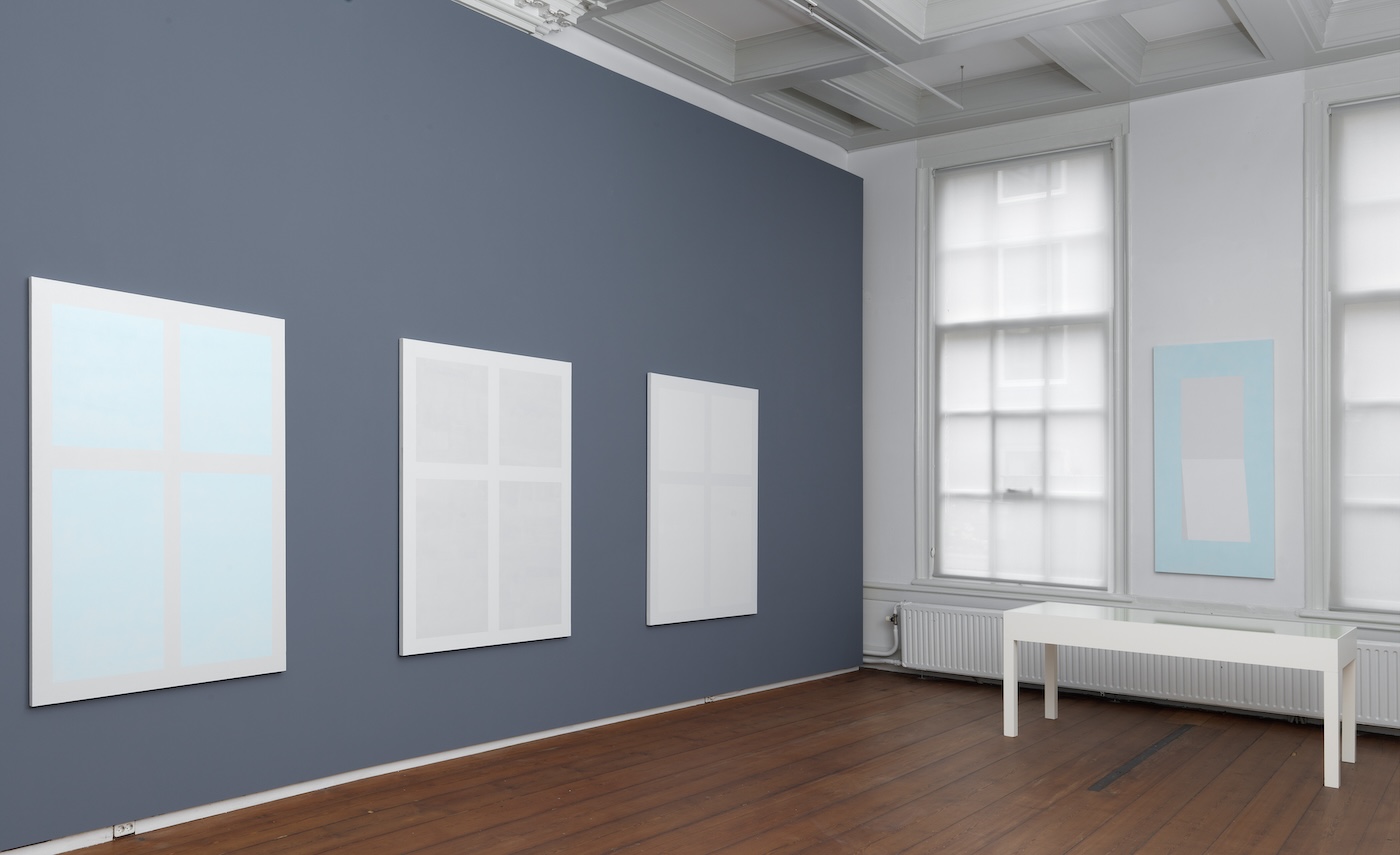
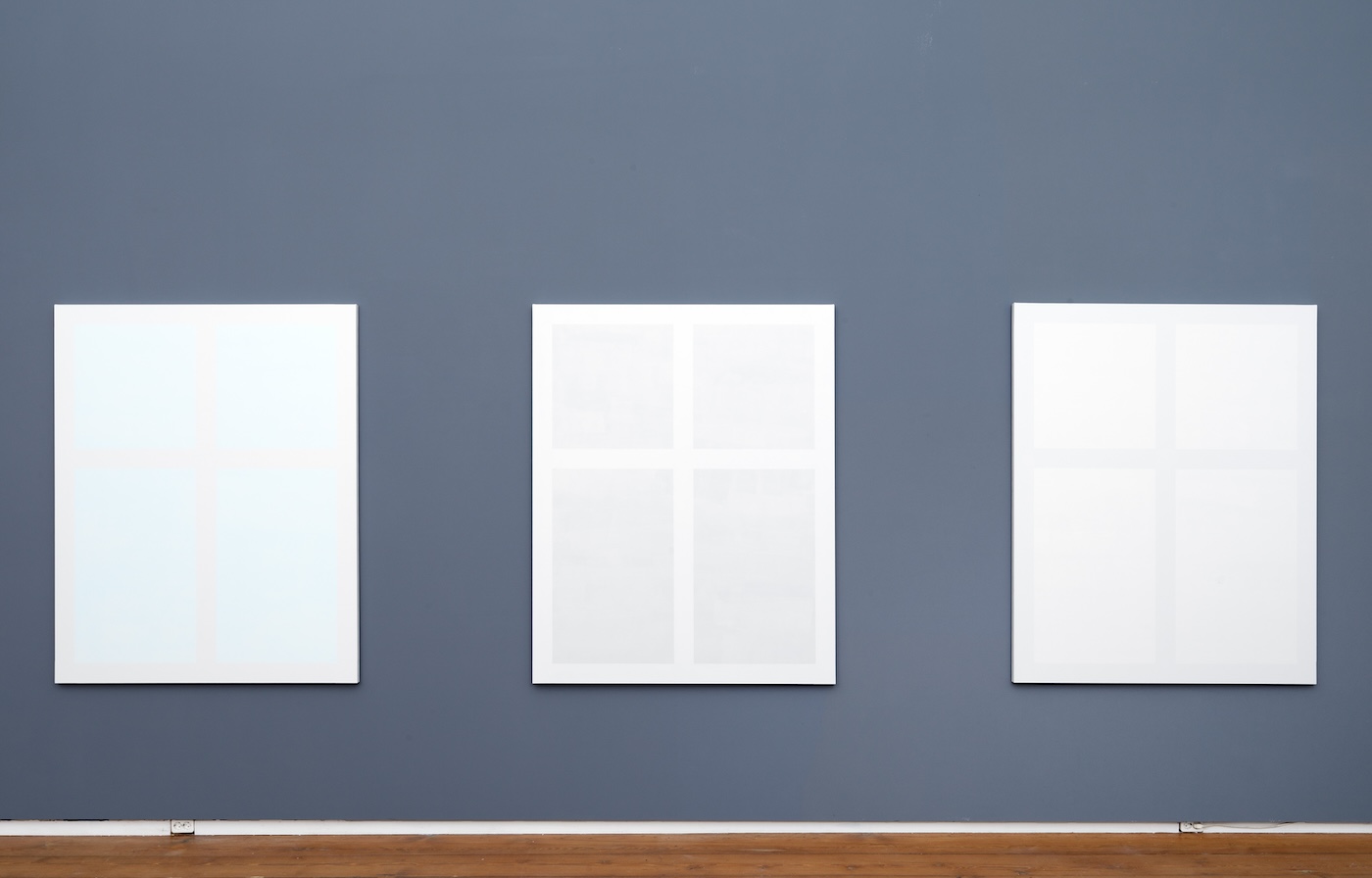
“Manual” at Upstream Gallery
August 31 – October 12, 2024
Photos by Gert-Jan van Rooij
Upstream Gallery is proud to present Manual, an exhibition of new work by Rafaël Rozendaal. This marks Rozendaal’s fifth exhibition with the gallery and shows a remarkable shift in his practice. He gained recognition by using the internet as his canvas, but for his latest series of works, he turned his attention to the traditional canvas.
Rozendaal has been highly successful with his digital artworks, as well as his prints, tapestries, and other art objects that translate the digital into the physical world. His pioneering status was cemented with his first major solo museum exhibition at the Folkwang Museum in Essen in 2023. However, Rozendaal’s artistic journey is unpredictable and unconventional. Last year, for the first time in his career of 25 years, Rozendaal rented a studio (previously, he needed nothing more than a laptop) and started painting. His earlier works were produced from intensive collaborations with experts in fields such as coding, weaving, or printing, but now he is working “manually” for the first time—using his hands, acrylic paint, and canvas, working by hand results in a less controlled approach compared to his earlier works, which compels him to embrace accidents and enjoy the process. It seems like an unusual choice for one of the world’s most renowned digital artists. However, despite the new medium, his signature style is unmistakable, and his visual language is rooted in the digital world.
The exhibition features 12 of Rozendaal’s sketchbooks from the past six years, showing how his concepts take shape. For him, the creation of each new work begins by hand. Sketching is a method of thinking on paper for the artist, where lines replace words in shaping ideas. For years, these sketches were precursors to his digital works—pieces that are interactive, dynamic, or driven by chance, producing infinite, ever-evolving images. The fluidity of the digital medium allowed for continuous movement, where images never settled. Yet over time, Rozendaal’s work slowed. He began to create images that didn’t need animation. This shift led him to explore different materials, from enamel on steel (“Mechanical Paintings”) to colored plexiglass (“Extra Nervous”), ultimately arriving at painting.
Unlike the flat, textureless surface of a phone or computer screen, painting offers a tactile, imperfect experience. The ease of working digitally, where sketches could be transformed into colorful shapes without the constraints of physical space or materials, kept Rozendaal from painting for a long time. On a computer, he could experiment fearlessly; there was no need for storage or supplies, and every mark was easily undone. The digital space became an environment of infinite possibilities, a stream of consciousness without limits. But painting requires a different mindset. It is a constant negotiation with accidents—deciding which ones are valuable and which need to be discarded. Initially, Rozendaal approached painting with the idea of setting up a process that could be executed by anyone, like a factory. However, he quickly discovered that the joy of painting lay in the accidents and that spending time in the studio was more fulfilling. Painting became a source of joy, and the process of learning through exploration, rather than expertise, opened new doors in his practice.
Rozendaal quickly discovered a pleasing texture using a roller with very thin paint. The roller offered a more industrial, accidental quality compared to the nuanced variability of a brush. By applying multiple layers of diluted paint, he creates depth, with each additional layer contributing to a richer, more opaque color, in contrast to the transparency of a single layer. The colors Rozendaal uses are functional, in the sense that they serve the subject in the composition. But this does not mean that color is less important – he often chooses a color that appeals to him first and comes up with a subject later. In his digital work, he was used to working with very limited color systems. On the web, a color like red is defined by a simple hexadecimal code. In painting, the same color becomes a complex, multifaceted experience, where variations in hue, application, and surface can transform it entirely. This imperfection is what makes painting so intriguing for Rozendaal—colors interact with each other in ways that seem more dynamic than in other mediums. A red placed next to a blue strengthens both, while red next to orange creates a completely different experience.
Rozendaal’s use of figuration in the paintings is not meant to tell stories or make statements, but rather to explore abstraction. He seeks how few lines are needed to evoke familiar subjects, such as a landscape or a glass of water, something he calls “minimal figuration”. He reduces a subject or scene to a universal language, like diagrams. Rozendaal is fascinated by the tension between the recognizable and the physical reality of painting—where his subjects become a dialogue between the image and material.
Ultimately, Rozendaal views the essence of art as the encounter between personality and material. He learns from each medium and responds to it in his own way. His entire body of work—whether digital, woven, or painted—has always acted like painting in some form. He arrived at a language for painting that is shaped by his background as a digital artist and his beginner’s mindset, bringing a fresh and unconventional approach to the traditional medium.


